INVITATION – FRIDAY 2ND DECEMBER


Pete Lowden is a member of the Friends of Hull General Cemetery committee which is committed to reclaiming the cemetery and returning it back to a community resource.


Pete Lowden is a member of the Friends of Hull General Cemetery committee which is committed to reclaiming the cemetery and returning it back to a community resource.
The anniversary this month is poignant. It marks 50 years since the Hull General Cemetery Company dissolved itself. Since that time the site has undergone some changes; some good, some not so good. It has changed ownership for better or worse. The site has been ‘developed’ and then allowed to sink back into the ‘decay’ it had been in before that ‘development’. One could say that Hull General Cemetery has had mixed fortunes since the last meeting of the shareholders of the company took place.
But that was in the future. In June 1972 no one knew what would happen to the site, least of all the Company, and neither did its future owners, Hull City Council. At no time did it seem certain that Hull City Council would become the owners. Although, quietly and behind the scenes, some activity told a different story.
Let’s look at how the Council did take over and this story may take us all back a lot further than you’d think.
On the 14th December 1853 the company received a letter from the clerk to the Local Board of Health. This body had recently been set up in response to the Public Health Act of 1848. Amongst its many duties was the control of burials within its district. It was with this duty in mind that Mr Wells, the clerk, wrote to the Company. Mr Wells said that he had been instructed by the Parliamentary Bill Committee to ask the Company to name their price with regard to selling their cemetery.
This letter on the face of it was straightforward. Basically it asked for the company how much they wanted for selling the site. Underlying that letter though was an implied threat. This threat was that the Parliamentary Bill Committee were, at that moment, steering a bill through Parliament that sought to ‘improve’ the town. Part of that improvement was the right of compulsory purchase of the cemetery. That the letter came from this committee rather than the Local Board of Health itself would not have been lost on the Directors.
It also cannot have slipped the Directors’ minds that the Local Board of Health’s solicitor had written to them in November. This November letter was much less friendlier. It stated that,

The threat of the Local Board of Health (LBOH) to compulsorily purchase the cemetery coupled with the oblique threat of erecting gas works in front of the entrance of the cemetery would have been fresh in their minds.
The December letter stated that the LBOH,
‘would be glad to receive from the Company an offer to sell to the local Board of Health for the benefit of the Borough the Hull General Cemetery and all its property rights and interests.’
A reply was requested by the 22nd. The company replied saying that, ‘it was not their present intention of the Company to part with their cemetery.’
The following February 1854 another letter arrived. In this the Parliamentary Bill Committee suggested that three directors should meet three LBOH members with a view to settling this issue. The Company agreed to this and dispatched the Chair, John S. Thompson, William Irving and John Pearson Bell to this meeting.

Suffice to say that both parties attended the meeting with their own agenda. Although there were glimmers of agreement it was not wholly successful for either side. The Company did agree to sell the cemetery to the LBOH but they wanted the LBOH to come up with a price first. However the LBOH did not do this and the matter was not pursued. No doubt the LBOH felt that their Act of Parliament would gain the cemetery for them. They were in for a surprise.
For the Cemetery Company were also pursuing this approach. It became a race which Act would be enacted first.
As such both parties set to with a will to get their respective Acts of Parliament through the next session of Parliament. By 1854 the Corporation had their Hull Improvement Act in place that would have enabled them to purchase the cemetery. However the Company had managed to get their own Act in place. This forestalled any municipal authority from compulsorily purchasing a cemetery established and incorporated by an Act of Parliament. Stalemate. A couple of years later anther approach almost made it over the finish line but was scuppered by greed. You can read about it here. An Anniversary: June 1856
And so this state of affairs continued for the next 120 years.
Having said that, the fortunes of both parties altered significantly over time. In 1854 the Company was definitely in the driving seat. In effect it could name the conditions upon which it would sell. This was its highwater point. After this the pendulum swung the other way. By the turn of the 20th century the company would have been glad to sell the cemetery but the Corporation now had its own burial grounds and was content to wait.
By the middle of the 20th century the chair, Arthur J. Downs, a relative of Rose, Downs and Thompson, the engineering firm, was reporting to the Company AGM that negotiations to sell the site to the Corporation were stalling.
‘It was noted that the corporation were insistent that steps be taken to recall capital as a condition to their considering the matter further. As such the matter was not competent business for discussion at an Ordinary General Meeting, it was decided that the new board, when constituted, should take up negotiations and refer back to the proprietors as necessary.’
This issue of ‘recall the capital’ refers back to the foundation of the Company. Avid students of this subject will remember that the initial shares in the company were sold for £10. Out of that £10 only £1 of that was asked from the shareholders by the Company. The Company had, from its beginnings, worked on income it generated and initial lending via bonds. As such the original shareholders reaped the benefit of dividends for over a hundred years without actually paying the full price for their shares.
By the time the Company found itself in financial trouble many of the original shareholders had died or their families had moved away. Thus the Company felt it was unfair to trouble the descendants for the remaining £9 owing.
Sadly, the Corporation didn’t view that particular issue in such a misty-eyed way. They demanded that before any purchase of the cemetery this money should be paid into the cemetery coffers. In this way the Corporation felt that they would not have to pay the entire cost of attempting to bring the site back to a healthy state. Upon this rock all future negotiations foundered.
By 1955 two changes had occurred. Firstly a new chair was installed. This was Clifford Hookins Ashburn. A solicitor, like many of his predecessors. As such he perhaps saw more clearly that the present situation could not continue.
The second change was that on the 27th January that year the nettle was grasped. At an Extraordinary Meeting of the proprietors a resolution was put forward. This stated that,

On the face of it this resolution would allow the Company to continue negotiations with the Corporation. However an upset at the meeting changed things.
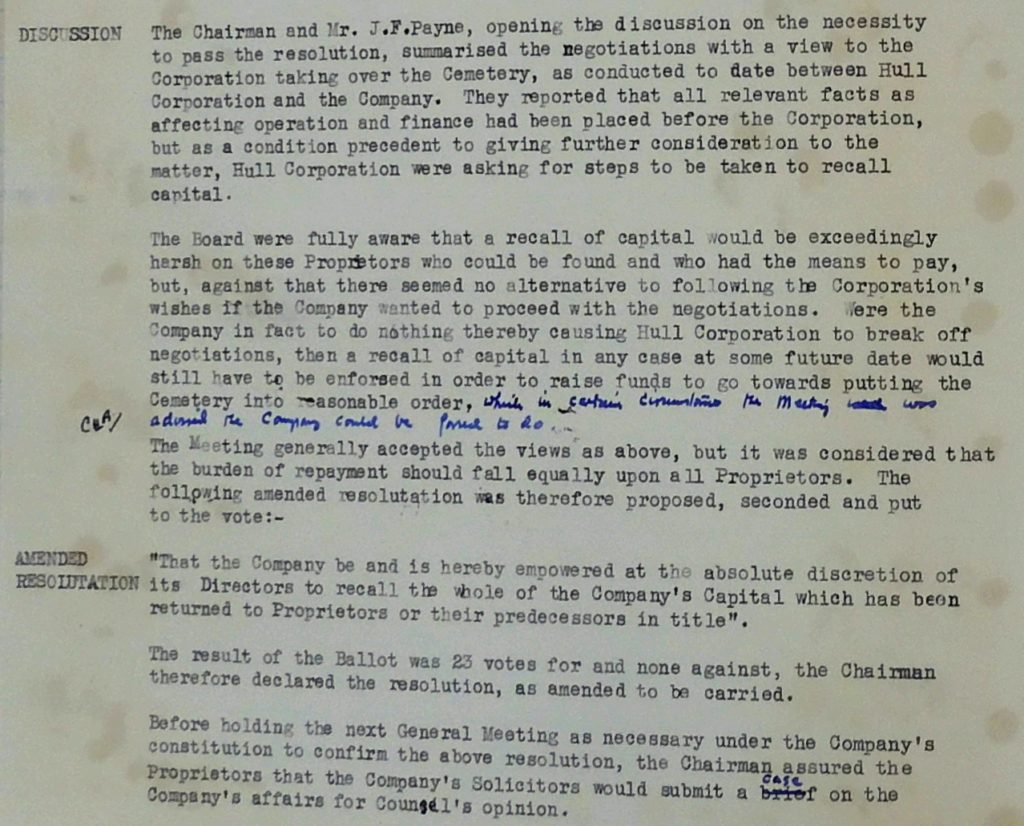
So the ‘burden’ of paying the £9 owing would not simply be taken up by the remaining proprietors but also by the relatives or descendants of all the shareholders. Some of these people may not have known they were shareholders in the Company. Those old shares could be mouldering in a trunk in the attic or have been lost over the intervening period of a century. It’s doubtful whether any of them had received any dividends over time as addresses would have changed.
This put the Company in an invidious position. They would now need to source where these ‘missing’ proprietors were and that would take money. Something the Company were sadly lacking in.
Realising that this task was impossible. the Chair and the Company’s solicitors, Payne and Payne, had, by June 1956, opted for hopefully an easier way. They approached the Corporation to accept £3 10 shillings per share rather than the full £9. The Board thought that this approach at least passed the buck back to the Corporation. The Board felt that it showed their willingness to compromise on the issue and provide a solution.
By January 1957 the Board heard that,

At a board meeting on the 21st August that year the Directors were informed that the site visit had been undertaken. Mr Roscoe, the Corporation Parks and Burials Superintendent, had visited the site. In researching this article I have not had sight of the report. However what we do have is a resume of the report and the conclusions of the Town Clerk, J Haydon W. Glen. It’s not pretty reading for the Company.
It starts quite positively and then takes a turn for the worst.
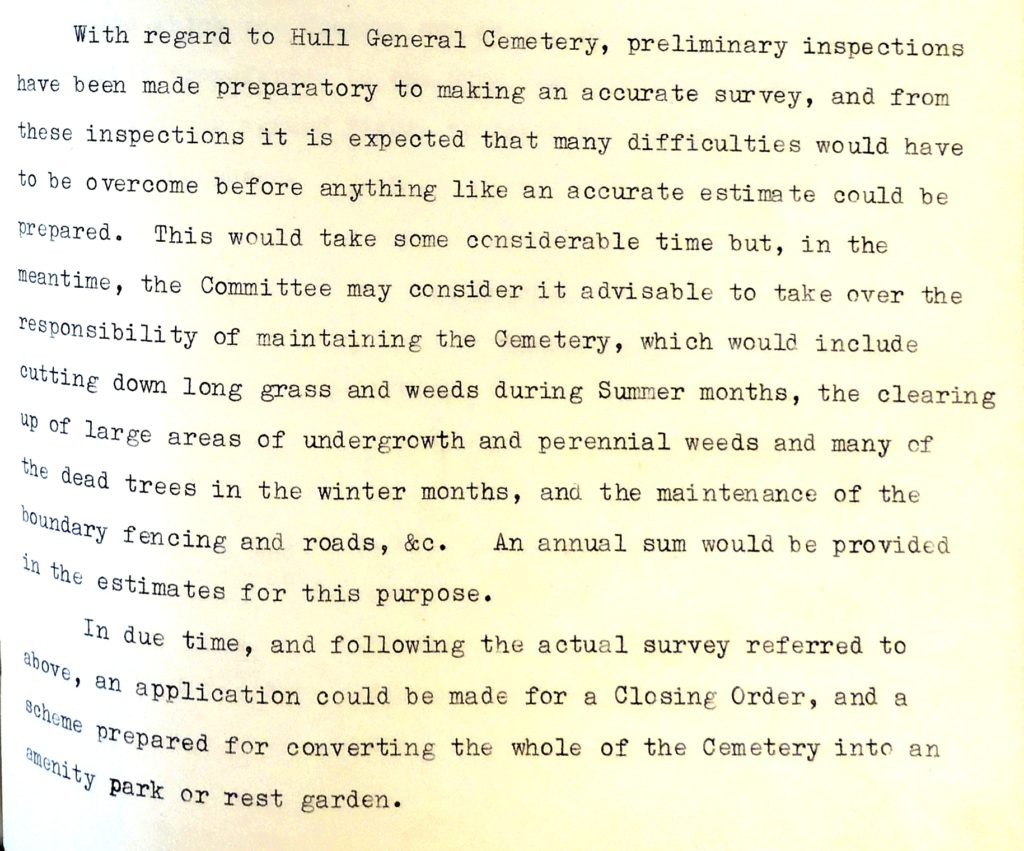
It went on to say,
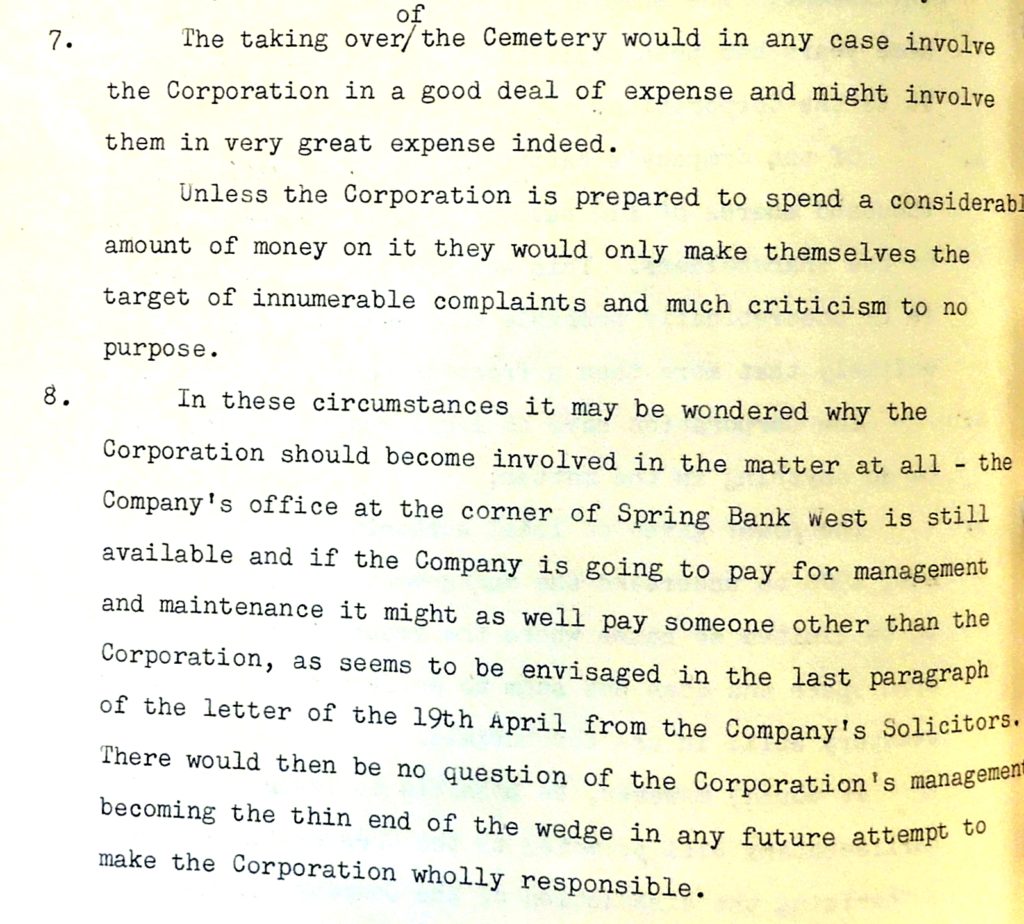
The resume by the Town Clerk was simply saying that the Company had managed to get itself into this mess, was still in business, so should endeavour to get itself out of it. As it says, ‘it may be wondered why the Corporation should get involved in the matter at all.’ And an objective observer would probably agree with them. It needed the Company to fail completely before the site could be rescued.
With that report, the hope that the Company had of the Corporation taking the site over was gone.
In November 1961 the Company formally recognised this and recorded that they would not approach the Corporation again. The issue resurfaces indirectly in November 1966 when the Company asked for another look at their own counsel’s advice from a decade ago. This advice had been to sell the site quickly as may be seen below,
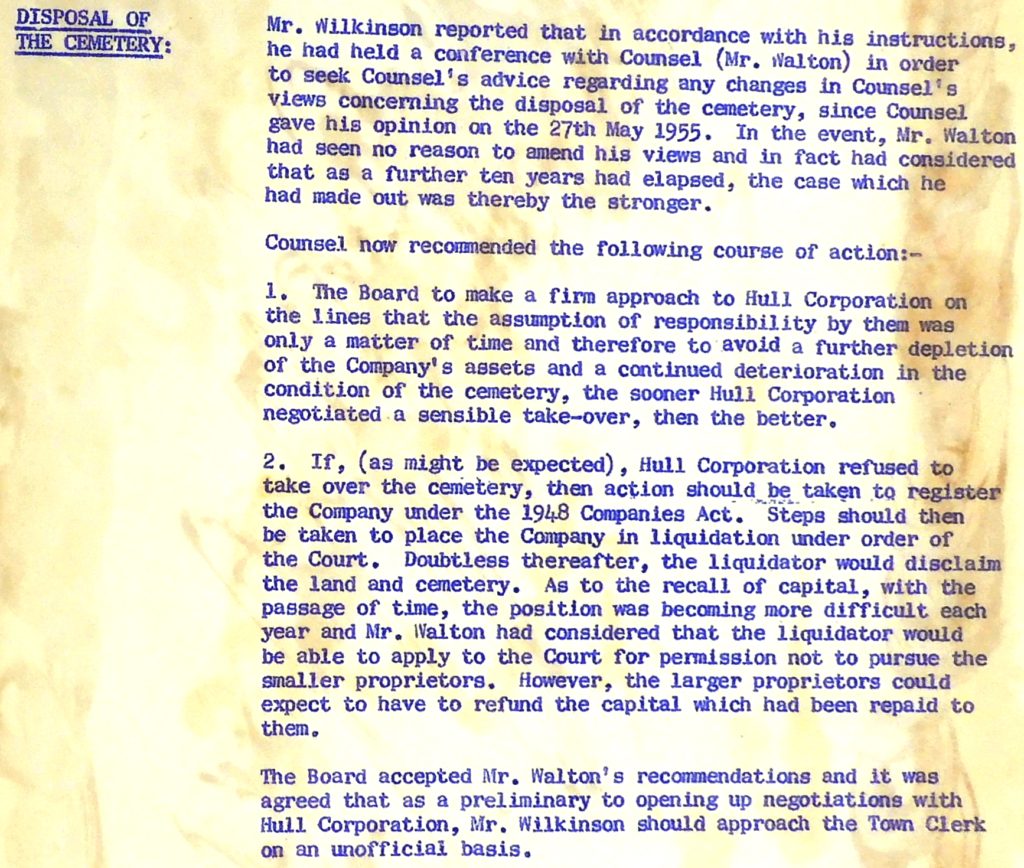
At the next meeting of the Board on the 27th August 1968 Mr Wilkinson reported back. He said that although the Corporation were not unsympathetic to the Company, they said they themselves did not ‘have the resources to take the initiative in the matter.’ As such the Corporation said the Company ‘must do what it thought fit.‘
Upon this news the Directors decided to undertake another plan. This was to list the Company under the Companies Act 1948. Taking this approach meant that the Company could apply to the Courts to be liquidated under that Act. The Extraordinary General Meeting (EGM) of the proprietors that would vote on this issue was to take place on the 11th August 1970. The Board were confident it would be approved.
At this meeting 10 proprietors attended, owning 153 shares between them. The chair outlined the situation facing all those present after which the outcome was a foregone conclusion. A resolution was put forward from the floor and it was unanimously accepted.
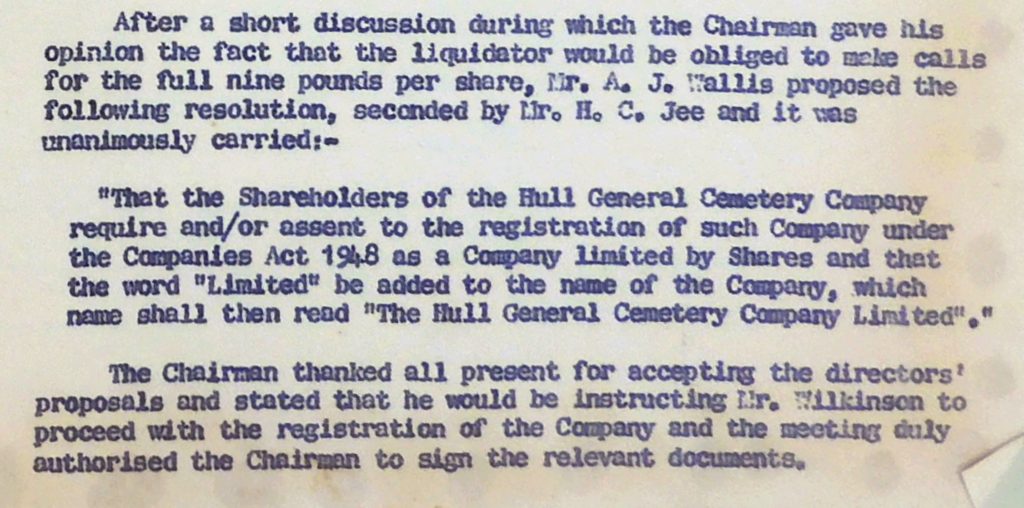
From now on the liquidation of the Company was simply a matter of when. Over the next 20 months the process of liquidation followed its legal course. By May 1972 everything was in place for the Company to be terminated. And then, at the eleventh hour, an outside intervention occurred.
On the 22nd May, at the Law Society Offices, Bowlalley Lane, another EGM took place. In an unconscious ironic twist of fate both this and the final shareholder’s meeting took place in the very building that the first meeting of the Company had taken place in back in 1845. Out of the 967 shareholders known to the Company only seven were present. However those present did own the majority of the Company’s shares between them.
At this meeting in May, Clifford H Ashburn, the chair, invited a Mr Dennis to speak. This young man, a Hull University graduate and now a businessman in a property company, outlined his proposal.
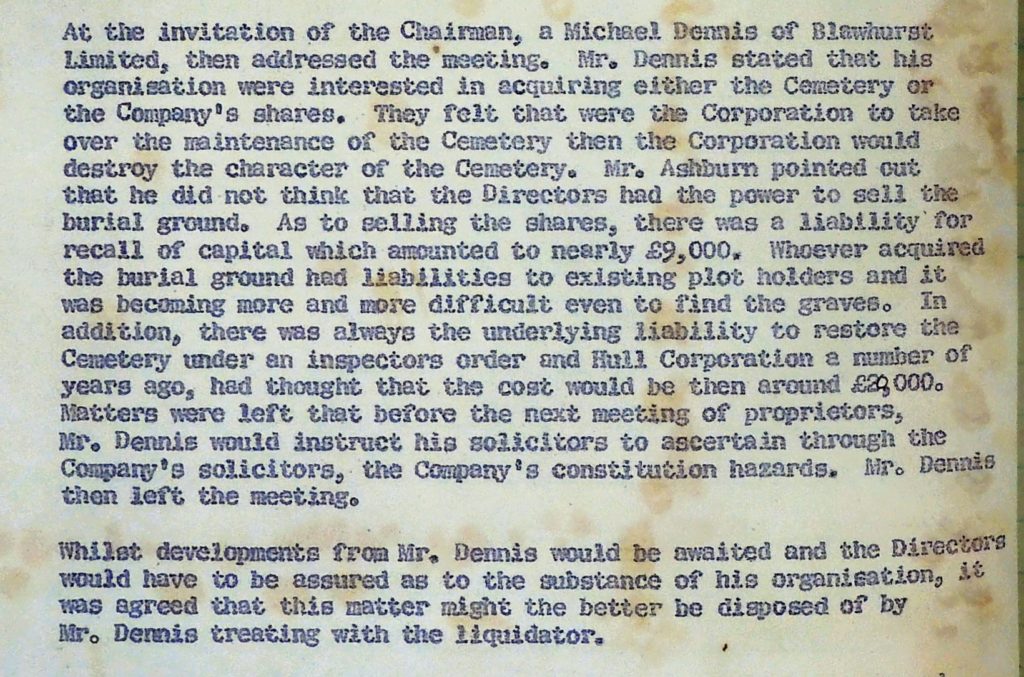
The chair had invited representatives of the local press and radio to this meeting. As such this late intervention was reported in the Hull Daily Mail the following day.
Under the headline ‘Hull Graduates Want To Buy Derelict Cemetery’, Mr Dennis’s scheme was explained. The article went into much more detail than the Company minute books. In essence it’s an intriguing ‘What If…’ aspect of the long history of the cemetery.
As the historian Hugh Trevor-Roper once said,
‘History is not merely what happened; it is what happened in the context of what might have happened.’
And with the intervention of Mr Dennis we have a perfect opportunity of imagining such a thing in connection with Hull General Cemetery. Could such an intervention have succeeded? What would have been the likely outcome over time?
On the credit side the Cemetery Company was not in debt. It still owned two properties. Yes, these were up for sale but that sale could be withdrawn. On the debit side it had no staff and the site was totally overgrown and shabby. However this last point appeared to be a credit point to the prospective buyers. In effect the site could have been transferred and the new owners have put into place their own plans. As long as the new owners closed the burial side of the business which the Company had already begun to do there would have been no legal objection that could have been sustained by the Council.
What then could have occurred? Mr Dennis said that a fence would be erected around the site. This would have been quite an expense. He also said that certain headstones and memorials would be made safe and restored. Once again this would have been an expensive undertaking. Other than making the paths of the cemetery passable no other work was envisaged. I would suppose that routine maintenance of the trees would have taken place to make sure they would not damage the stones but beyond that the site would be left in situ.
Mr Dennis did not say whether the venture would be income generating. However he was a businessman, even if he had long hair and ‘outlandish’ ideas, so it’s possible there was a germ of an idea to make money from the site. We do not know. However we can hypothesise.
Mr Dennis may well have foreseen that such a site could potentially generate money as a ‘heritage’ resource. We are all familiar with visiting country houses etc but accessing other sites rich in heritage is also viable. Possibly Mr Dennis may have had such an idea that the site could become such an attraction. With the rise of genealogical studies in the 1990s such sites became much more popular. Guided tours of the historic monuments (for a price) could have taken place. Accessing both local and central government funding for environmental and bio-diversity work could have also generated significant income. Another form of income generation could have been leasing it out as a film or television set. One can imagine how this could have been successful.
By the millennium the site could have become a self-sustaining part of the rich fabric of attractive heritage and natural highlights of the city.
Meanwhile back at the meeting, and the press report that followed.
The article began by stating that,
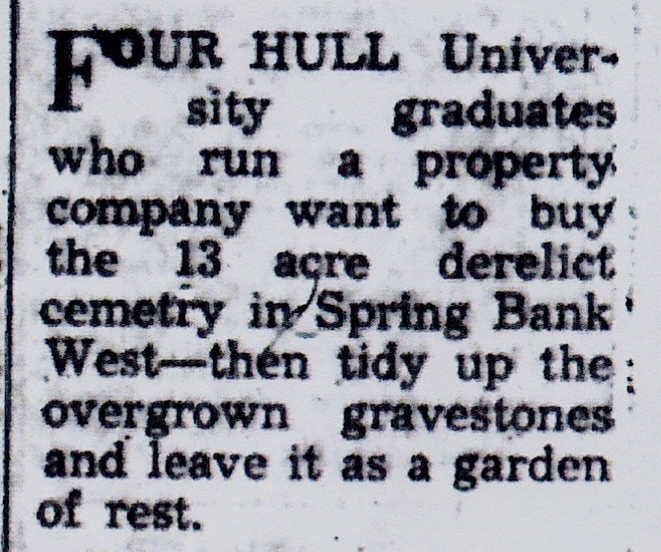
Mr Dennis, the representative of the graduates, stated,
‘that he feared the Hull Corporation would take over the cemetery, and by flattening it out, make it “a ghastly and tasteless plastic graveyard for plastic people.”.
Mr Dennis channelling Frank Zappa there! And of course he wasn’t far wrong in that assessment as a previous article pointed out. A Monumental Loss
Warming to his theme he outlined the plans he and his fellows had for the site,
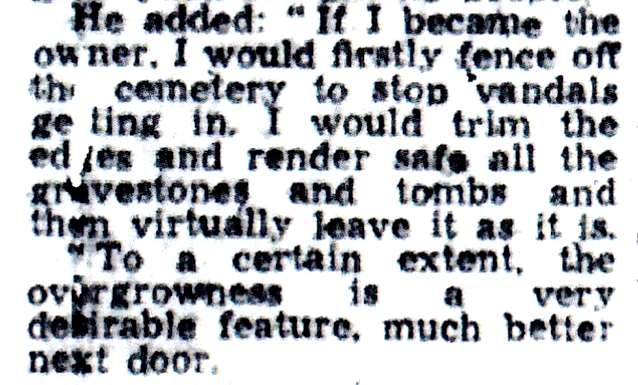
This was perhaps not what the present owners wanted to hear. They had lamented the state of the cemetery for the best part of 40 years without paying for its restoration. Now, sat in front of them, is this long haired ‘hippie’ saying that he and his fellows preferred this state of affairs and indeed wanted it to continue. One can imagine their consternation at this news.
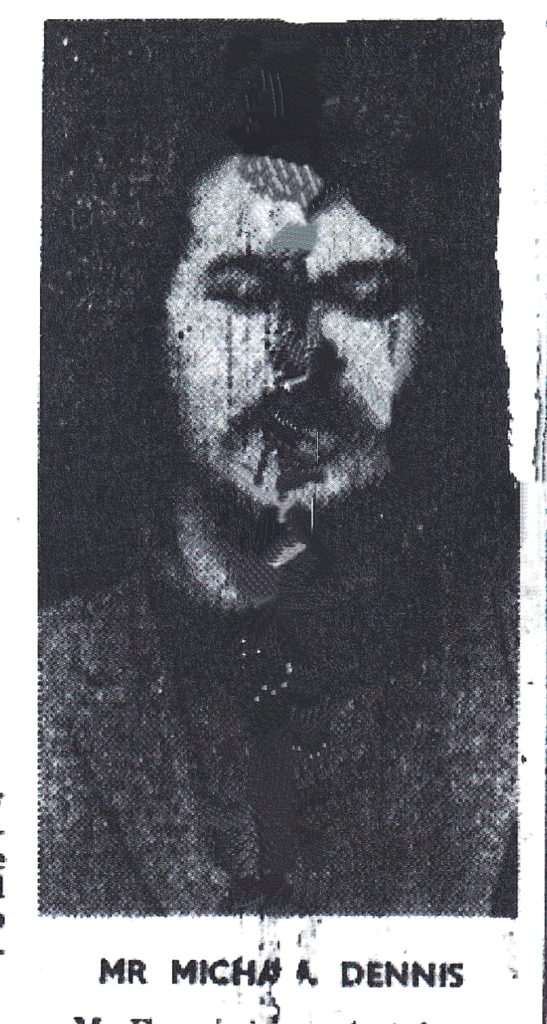
Under the paragraph heading, ‘Not Crazy’, Mr Dennis further outlined how he would take control of the cemetery,
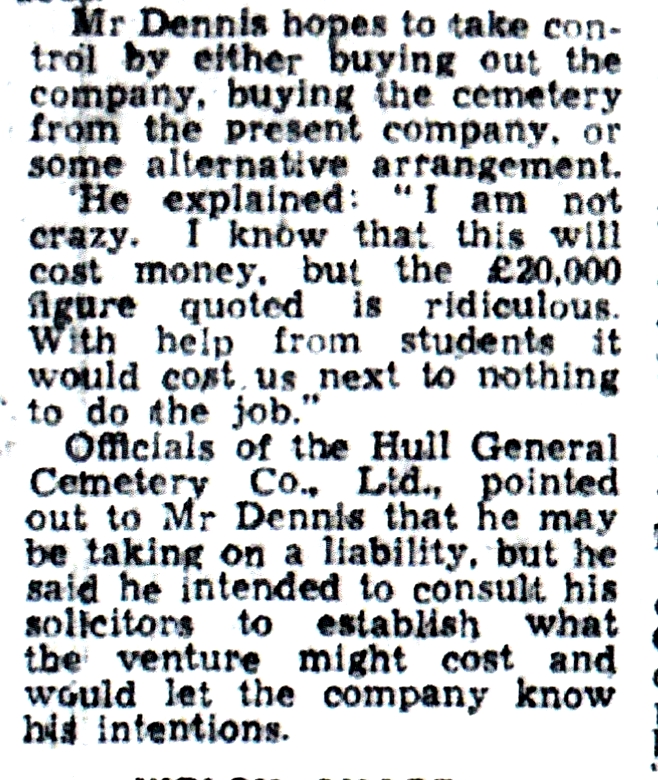
In the Yorkshire Post Mr Dennis was quoted as saying,
‘I want to buy it because it is a nice place just as it is – as long as it will not cost me too much. You could say I just want it as a garden. Let the place rest in peace whereas if the council got hold of it we would have council officials marching all over it, levelling it out. Many people enjoy looking around it in its present wild state. Let them enjoy the pleasure.’
He also said in the Hull Times that he did not want the Corporation, ‘to take over the cemetery, to make it into a second Queens Gardens.’
At the end of the Hull Daily Mail article the chair of the Cemetery Company poured cold water on this plan. He said he did not think it was possible for Blawhurst Limited, of which Mr Dennis was a founder, to buy the cemetery.
‘For one thing it may be too late to do anything now as we are well on the way to having the Company would up. It must be in doubt whether Mr Dennis’s company have enough cash. There are also various legal complication to be considered.’
With that cold assessment we now move on to the endgame of the Cemetery Company and to the final meeting of the Company. However, before we enter that meeting room for the last time, the intervention by Mr Dennis and his associates caused some ripples beyond the room.
On the 31st May, eight days after this meeting, the Joint Under-Secretary of State at the Department of the Environment (DOE), a Mr Keith Speed, revealed that Hull Corporation had already enquired for a direct grant from his department to ‘tidy up the dilapidated 127- year old cemetery.’

Sir Keith Speed, as he later became, was the minister for the Navy and was sacked by Margaret Thatcher in 1981. He had publicly disagreed with the cuts taking place on the Navy that she and the defence minister John Nott, were imposing. A year later, with the Falklands War, his assessment was proved correct. Naturally enough he was never forgiven by Thatcher and he was only knighted after she had left office. He died in 2018.
This embarrassing revelation for the Corporation came about, probably much to the Corporation’s chagrin, via the West Hull M.P. James Johnson at the time. He had received a letter from the DOE after he complained about the state of the site. So, contrary to past denials and negative pronouncements about the site the Hull Corporation were seeking to acquire it. But they did not want to buy it but ‘inherit’ it.
Responding to this news, Sir Leo Schultz, the leader of Hull City Council, said, ‘It was impossible at present to say whether the Corporation would step in.’ This statement, made no doubt to cover for the Corporation’s earlier machinations in applying for a DOE grant, continued,
‘There were plots which people had bought in the area but had not taken up, and the public still needed access to graves in the cemetery. The company is still using it as a burial ground, I understand, so we have commitments regarding it. this means we could not take steps to clear it up until the company has totally completed its business.’
The phrase, ‘to clear it up’, perhaps already shows the Corporation’s plans for the site. Ominously Sir Leo Schultz went on to say,
‘That in any case the Spring Bank area was not the only cemetery in the city which was untidy and needed attention. There were old cemeteries such as those near Division Road and Sculcoates Lane which also must be looked at under the clean-up scheme’
And so they were cleared up, with the significant loss of heritage assets such as the headstone of David Garbutt, the man behind the Avenues project, in Division Road. In Sculcoates Lane the destruction of the chapel that Greenwood in 1835 said was a great artistic piece of work was another blow to Hull historical record. ‘Clean-up’, as a phrase used by the Council at this time, surely should have struck fear into any historian.
The final meeting of the Company shareholders took place once again at the Bowlalley Lane site. The date was the 1st of June 1972. At this meeting two resolutions, unanimously agreed by all present were put forward. The first was that, ‘The Hull General Cemetery Company be dissolved.’ and the second stated, ‘That the Hull General Cemetery Company Limited be wound up in Court.‘
The shareholders then had to deal with the intervention by Mr Dennis and his associates. The shareholders had already agreed that they could not countenance this deal. As the minutes show,

It was only after the press were informed of this decision that Mr Dennis was asked to join the meeting. There he was not told that his offer had been rejected. He was asked to explain his offer once again which he did.
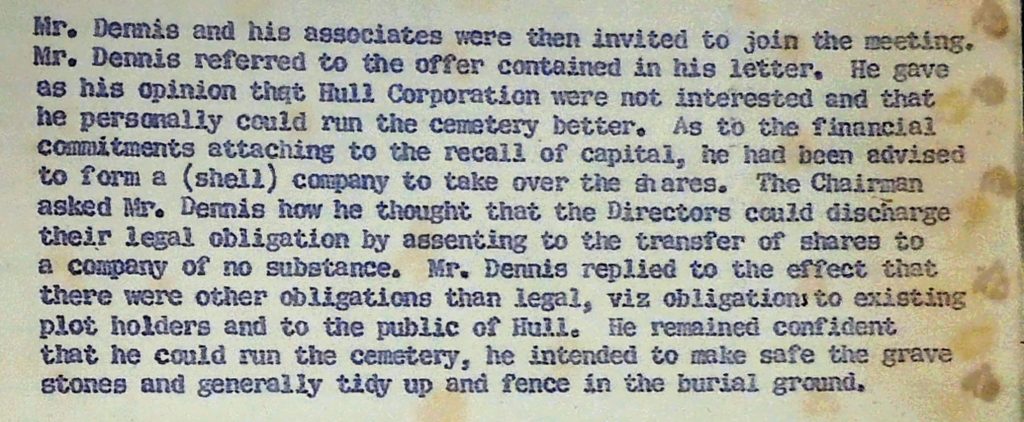
This approach would not have endeared him and his associates to the shareholders. He was saying that the cemetery, as it stood, was fine. That he could continue to run the cemetery as a business but that would not be its main function. Its main function would be as a site of historical and environmental interest. In essence Mr Dennis was stating something that to us today is quite normal but to the ears of the shareholders it was not only novel but dangerous. Indeed Mr Dennis was articulating what the Spring Bank Cemetery Action Group and the Friends of Hull General Cemetery said later. That the combination of both nature and history complimented each other and should be preserved as much as possible. That in it’s present state (in 1972) it was attractive and informative. The shareholders must have thought the young man was mad.
Meanwhile back at the meeting,
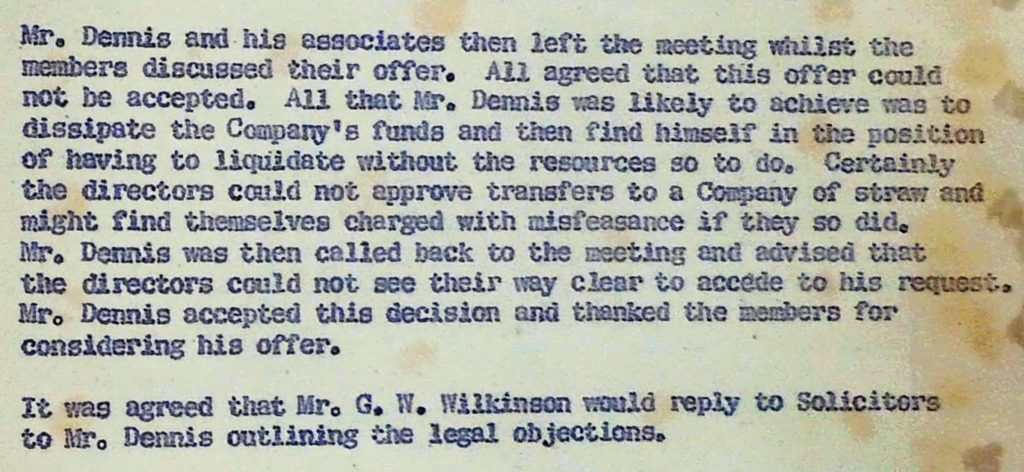
So the last chance to preserve the beauty of the Cemetery as it was was lost. That the directors stated that Blawhurst Ltd was a ‘company of straw’ is ironic as it is still one of the leading rental property owners in Hull. Once again one wonders what if the directors had gone along with this scheme what would we now have today on the site? A fruitless exercise I know but sometimes one can’t help playing such mind games.
The final minutes of the final meeting of the Hull General Cemetery Company were never signed off as no further meeting took place. In 1872 the Marie Celeste was found floating in the Atlantic with no one aboard yet still appearing as if it was crewed. One hundred years later so must the Hull General Cemetery have looked. The site continued to exist, the stones still stood in serried ranks, the wild things still scurried around and the trees and bushes still encroached further on to the paths. The site did not care a fig for legal obligations or who owned what. It just did what it does today; it continued to exist.
For 18 months the site was ownerless and then things changed. On December 14th 1973, under the headline, ‘City to buy derelict cemetery’, the open secret that the Hull Corporation would take over the site was revealed finally.
The article went on to say in an unflattering way, and it must be said that the Hull Daily Mail was one of the site’s severest critics. It never failed to use the word ‘eyesore for the site.
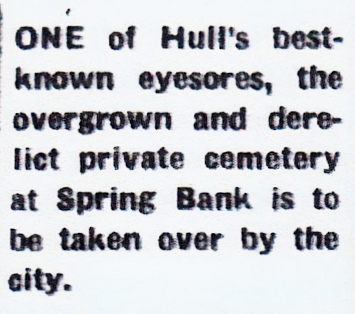
Perhaps more sinisterly, the plans for the site were expounded by Mr J.A. Milne, the Director of the Council Leisure Services Department.
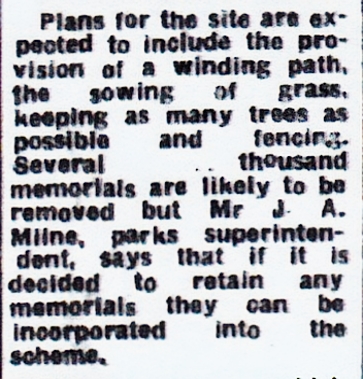
This is where this part of the story ends and the next stage of the story is already on this website. Please read it and realise what we have lost. A Monumental Loss
I attempted to contact Mr Dennis back in 2016. I was intrigued by this whole episode as I hope you are. He had since retired from his role as a Director of Blawhurst Ltd and now lived in Devon. Sadly I never received a reply to my enquiries and perhaps he felt that, as L.P. Hartley said in The Go-Between, ‘The past is foreign country; they do things differently there.’ Like us all he perhaps feels that his youthful indiscretions should remain hidden and forgotten. Who am I to argue with that? It is a shame though.
This is my last piece as editor of the website. It some ways it seems quite fitting to end with the end of the Company. It’s almost as if I had planned it that way which I assure you I hadn’t. I hope you have enjoyed these glances at some pieces of forgotten and ignored history. I hope you continue to enjoy the website and the cemetery itself for as long as you want to. Bye.

Pete Lowden is a member of the Friends of Hull General Cemetery committee which is committed to reclaiming the cemetery and returning it back to a community resource.
Some of you may remember Chris Ketchell. A local historian of note he initiated the Local History Unit in the mid 1980s. The list of his local history publications stretches for 7 pages of A4. The amount of projects and campaigns he was involved in was almost as long.
His involvement with the Hull General Cemetery was also over a long period. He roamed the site well before it’s ‘redevelopment’ by Hull City Council. Chris was one of the major figures in the fight against this wilful destruction of habitat and heritage. He loved the site. His work, ‘Grown in Sadness and Beauty’ was the first attempt at a written history of the site. The FOHGC owes much to this man’s influence and spirit in its custodianship of the site.
Sadly Chris died in 2011 with perhaps many more works to come from his fertile mind and pen.
There is an annual local history lecture given to commemorate this man’s life usually during the month of his birthday, April. Due to the pandemic the lecture did not take place during 2020 and 2021. The decision was made to hold it again this year. It will take place in the lecture theatre at the Hull History Centre on the 7th July at 2.00 pm.
I’m proud to say that I will give the lecture this year. The talk will be loosely based upon my The Rise and Fall of Hull General Cemetery but the latter part will focus upon the fight against the ‘redevelopment’ of the site in the 70s and Chris’ part in that fight.
I’m also pleased to say that, after consultation with the Avenues and Pearson Park Residents Association (APPRA), they felt that it was now appropriate that an APPRA green plaque be attached to the house he lived in Westbourne Avenue. This will be unveiled some time this summer. A fitting tribute to Chris Ketchell.

Pete Lowden is a member of the Friends of Hull General Cemetery committee which is committed to reclaiming the cemetery and returning it back to a community resource.
This is an article that Bill Longbone produced some years ago for the Facebook site. In it he listed a number of women who were independent minded, resourceful and also influential. They also had a connection to Hull General Cemetery.
Bill called the article ‘Inspirational Women’ and the title fundamentally says it all. With one or two changes here it is once again for your pleasure.
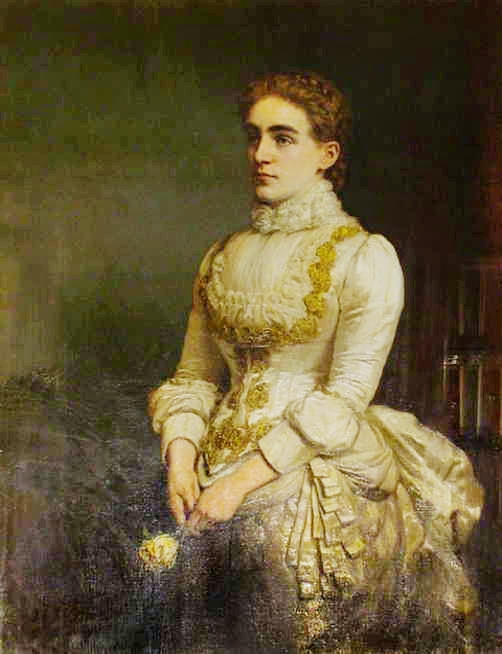
Eleanor Rollit (Bailey) was born in Hull in 1853, the 2nd daughter of ship builder, William Bailey and Mary Badger Ainley. William was a self made man, and a partner in the steamship company, Bailey & Leetham, which was taken over by Thomas Wilson & Co. in 1903. William was a JP, and a director of the Hull Dock Company and lived at White Hall, Winestead.
Eleanor married Albert Kaye Rollit at the newly opened, St Peter’s Church, Anlaby on 26th August 1872 when she was just 18 years old. Her brother, Walter Samuel Bailey, of The Mansion, Anlaby, married Albert’s sister, Ellen Rollit.
Albert Kaye Rollit, was the son of solicitor John Rollit, and brother of Arthur, also a renowned solicitor who lived at Browsholme, Cottingham. Albert became a successful eventually became President of the Law Society, and was later knighted.
In 1874 their only daughter, Ellen Kaye was born, and the family lived at Thwaite House in Cottingham. Eleanor was very involved with local charities, and was a great supporter and benefactor of the Sailor’s Orphanage on Spring Bank, she was also a patron of the training ship T.S. Southampton, that trained wayward boys and orphans in the basics of seamanship, and was moored in the Humber at the mouth of the River Hull. Eleanor personally opened bank accounts with the Hull Savings Bank for the boys.
Eleanor was always referred to as charitable and philanthropic, she organized annual visits and fetes at the family house in Thwaite Street, for the children of the orphanage, and subscribed towards a new wing at the Hull Royal Hospital in Prospect Street.
When her husband became Mayor of Hull in 1883-1885, Eleanor became Lady Mayoress and extended her support for local charities and good causes. She was also very active in the early women’s suffrage movement. Sadly, during her tenure of Lady Mayoress, she suffered heart problems, and died on 11 January 1885, aged only 31.
Her funeral was attended by ex-mayors, councillors and many of the local dignitaries. The cortege, which left from the family house in Cottingham, was lined all the way to Hull General Cemetery, with crowds of in excess of 20,000 people, including the orphans of the Sailor’s Orphan Homes. Her portrait was painted by Ernest Gustave Giradot and hangs in The Guildhall, a marble bust by local sculptor William Day Keyworth junior is also in the Guildhall.

In1892, her husband, Sir Albert Rollit, put a private members bill supporting votes for women, no doubt inspired by his wife’s work.
She was buried in the family grave, which includes her father in law, John Rollit and some of his children. Her headstone still remains in HGC, but the top section with her epitaph has been removed, and is in need of some repair work, (see photo below).
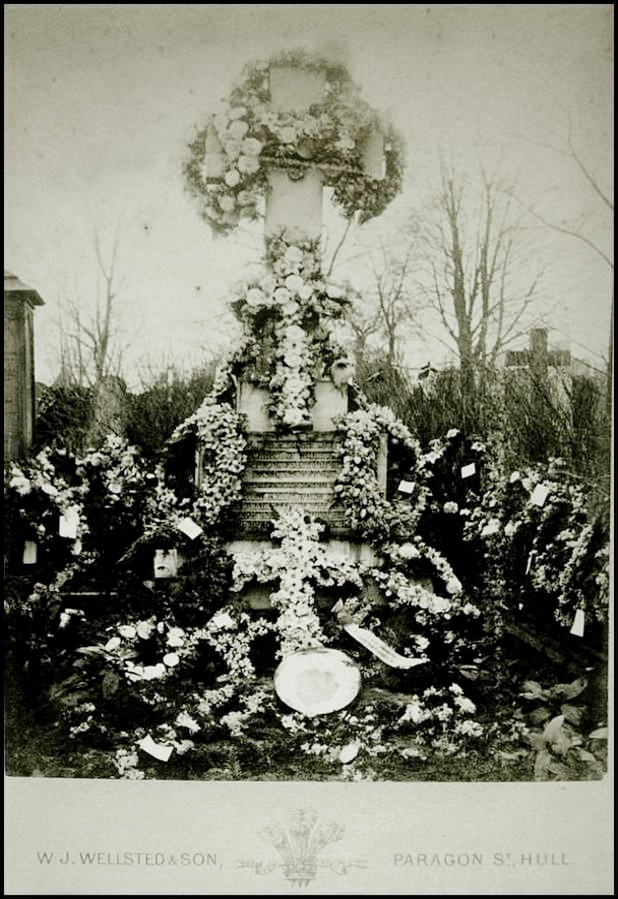
‘The Friends’ are looking at a proposal to carry out restoration work to the headstone.
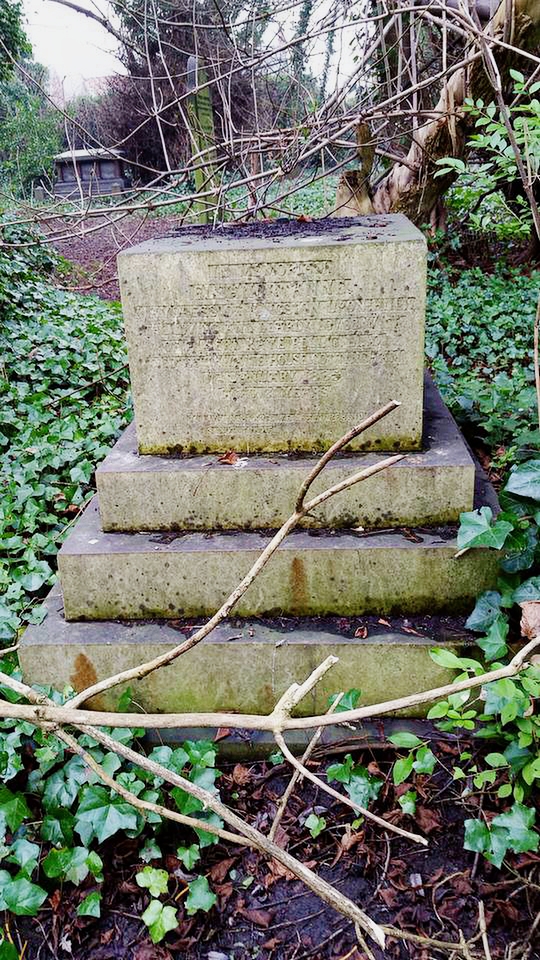
Her husband, Albert, moved to London and remarried the controversial and twice married, Mary Caroline Michell, Dowager of Sutherland in 1896, he died in 1922, his cremated remains are in the family grave in Hull General Cemetery.
Thwaite House, was later purchased by the University of Hull, the gardens were used by the Botany Department the house became Halls of Residence called Thwaite Hall. The house and grounds are currently being sold by the University.
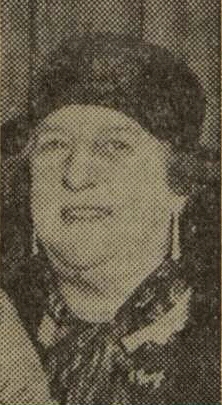
Mary Alice Sharrah was born in Hull in1863, the daughter of William Simpson Sharrah, a prominent Wesleyan, who was The Seaman’s Missionary for the Port of Hull, and his wife Mary Ann. She taught music from an early age, setting up the Hull School of Music (The first school of music in England), in 1887, originally from her family home at 22 Reed Street, and later at 55 Spring Bank.
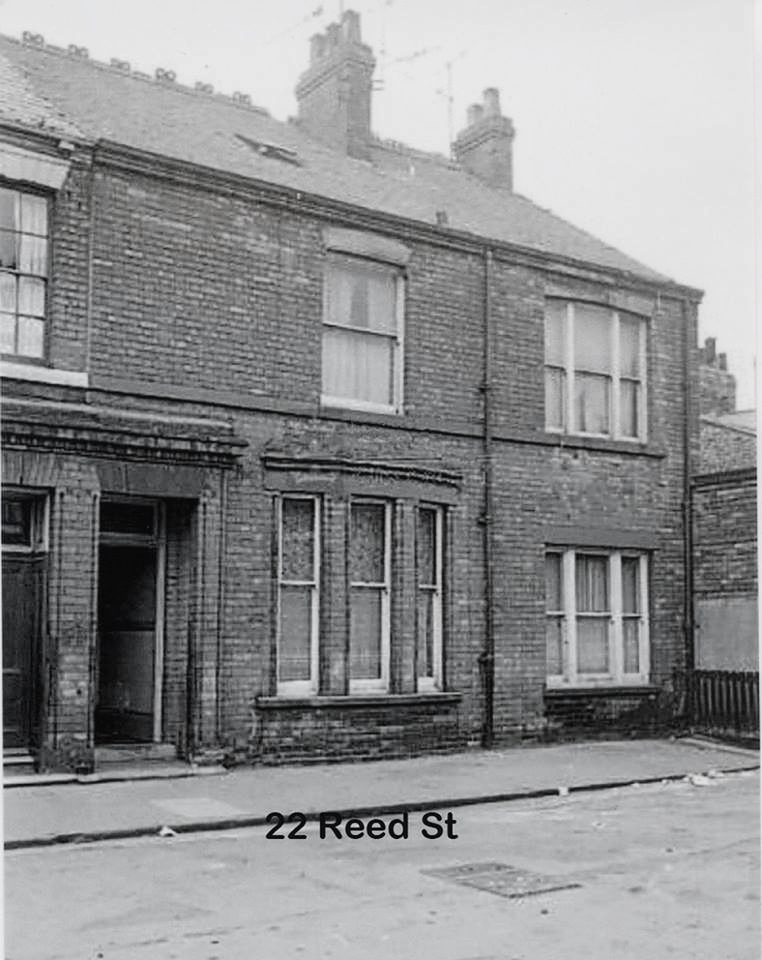
In 1894 she married William Henry Simpson, a director of a local grain merchant’s, and lived at their large house at 55 Spring Bank, which still exists. For teaching purposes she kept her maiden name of Sharrah, and referred to herself as ‘Madame Sharrah’. As well as music, she also taught drama and elocution, instructing many local talents such as Annie Croft, her son David Croft of Dad’s Army etc, Doris White and many others.
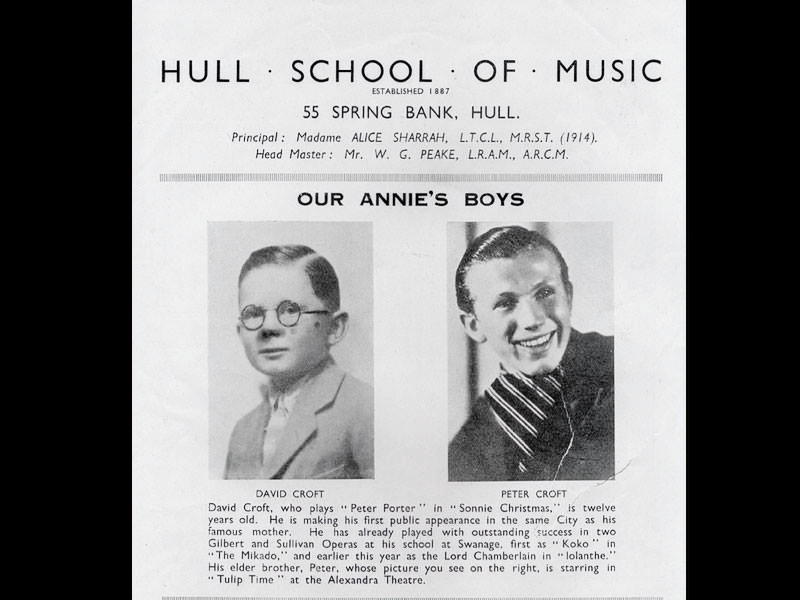
Madame Sharrah supported many charitable institutions with her shows and concerts, including The Mother Humber Fund, Newland Orphan Homes and the Hesslewood Orphanage. Throughout WW1 Alice was responsible for organizing many concerts in aid of servicemen.
Her daughter, Phyllis Sharrah continued the school after her mother’s death on 25th May 1940, amalgamating with Sizer Simpson School. The premises became 55 Antiques in the 1960’s, next to The Silhouette Club, and is now part of a number of listed buildings in the Belgrave block.
The entire family of father, mother and Mary are all buried in Hull General Cemetery, but sadly the headstones have been removed.
Mary Kirk Mawmill was born in Beverley on 7th October 1810, the daughter of William & Hannah Mawmill. She married Edward Robinson Harland in Hull on 11th August 1832. Edward had been indentured to be a greengrocer, but a year after his marriage he started his own printing business at 14 Carlisle Street, (a street later demolished to make way for Jameson Street).
They lived near the business premises in Carlisle Street, and had 5 children, employing 2 apprentices. Unfortunately, Edward died suddenly in 1844 aged only 33, leaving Mary with 5 young children and a business to run.
Mary was unphased by this set-back, and continued to run the business and bring up her young children. Under her stewardship, the business grew from strength to strength. She was described in the Hull Daily Mail as ‘a woman of rare business qualities, succeeding in keeping the Company together in the midst of great difficulty’.
A further set back occurred to Mary when her daughter, Emma, died in 1855 aged 20.
However, the business continued to expand, and became involved in the printing of tickets, two of her sons, William and Edward also joined the company to assist in the running of the Company. However, William died in 1880 aged 38, the company name was recorded as M Harland & Son. The other son Thomas, died in New Zealand in 1907 aged 74, the remaining daughter, Sarah, died in 1910 aged 73.
Mary died of an apoplexy at her home at 104 Regent Street on 3rd November 1885 aged 75, and was buried in Hull General Cemetery. After her death Edward took over the company, and moved to larger premises, to what was known as Phoenix Works, in Land of Green Ginger, although the correct address was Manor Street.
The company became one of the largest printing companies in Hull, moving to Springfield Way, Anlaby in the 1960s, and innovating into data printing and bar code systems. I believe that the company was taken over by a multi-national printing company in the 1990s, and business transferred to Eastern Europe, but a management buy-out took place and the company still trade at their Marfleet premises on Hedon Road.
Sadly, Mary’s headstone no longer exists, and she is not recorded in the MI books. She certainly was a resourceful and inspirational woman.
Mary was also the great grandmother of Annie Croft, the well known Hull actress and singer, but that’s another story…….
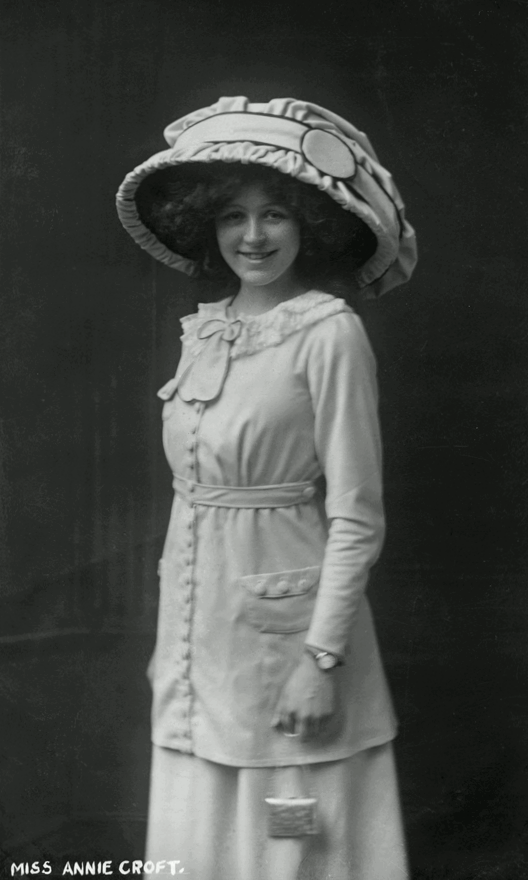
Many people will have heard of Annie Croft, the Hull girl who became an international star of stage and screen, but few will know of her fascinating story.
Although, not buried in HGC, she is very much associated with it, as her great grandmother, Mary Harland and the woman behind the success of Harland’s Printers is buried there.
Annie Croft was born Gertrude Mulgrave on 17th August 1892 at 11 Tuke’s Terrace, Walker Street, to Frederick Steele Mulgrave and his wife Lily Ann (Davis).
She was adopted by Michael Croft (1853-1895) and his wife Emma, the daughter of Thomas Harland and the grand daughter of Mary Harland, who we have discussed previously. She was baptised as ‘Annie Harland Croft, the adopted daughter of Michael & Emma Croft of 424 Hessle Road at the Wesleyan Methodist Chapel at the corner of St George’s Road on 24th November 1892. Michael and Emma had a shop on the opposite corner of St George’s Road to the chapel.
Over the years there has been much unfounded rumour regarding the parentage of Annie Croft. The ‘story’ was that she was the illegitimate daughter of Muriel Wilson, the daughter of Arthur Wilson and Edward Prince of Wales, (later King Edward VII), after an affair whilst the future king was staying at Tranby Croft. Whilst it is true that Prince Edward regularly stayed at Tranby Croft, (he was there at the infamous ‘Baccarat Scandal’) it has been proven beyond doubt that Annie’s ‘royal parentage’ was just a rumour.
Sadly, Annie’s adopted father, Michael Croft, died in 1895 aged just 41, leaving Emma to bring her daughter up on her own, but with some financial help from her father Thomas Harland.
Emma remarried William Drury, (a sea pilot) in 1898 and lived at 32 Waverley Street. Apparently William was a brusque man who liked a drink. He died in 1914, when Annie was 20 years old.

Annie joined Madame Sharrah’s ‘Hull School of Music’ when a young girl. She quickly became known as a talented singer and dancer, appearing in many of Mme Sharrah’s concerts and shows. In 1907, when only 16 years old, Annie decided to form her own school of dancing and music, which she called the Waverley Academy of Music, operating initially at the family home in Waverley Street, later moving to 5 Fountain Street.

In addition to teaching dancing, acting and singing, Annie produced many concerts and plays at the local theatres. During WW1 she produced many shows supporting local charities and raising money for servicemen.
Annie’s talents were well noted and she was offered parts in plays in London, and film roles. She married American stage and film star, Reginald Sharland (1886-1944), in Hull in 1914, and appeared in many plays with him. They later moved to Bournemouth. They had two children, Peter, (1917-1988), and David Sharland (1922-2011), both of whom trained at Madame Sharrah’s Hull School of Music and adopted the stage names Croft.
David Croft became famous as the writer of several BBC sitcoms, including, Dad’s Army, Are You Being Served?, Allo, Allo, It Ain’t Half Hot Mum, and Hi-De-Hi.
Annie divorced Reginald Sharland in 1931, and remarried Francis Gough in 1938.
Annie died in Dorset died on 23rd March 1959. She was aged 66.
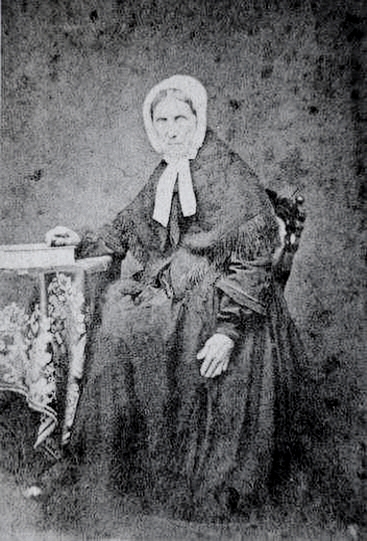
Jane (Barnborough) was born in Preston in 1778, and married John Wing at Holy Trinity Church, Hull on 21 Feb 1811. John was born in 1777 at Beeford, and had moved to Patrington some time before 1791, where he had set up a small post office and a mail coach service. The coach ran from Hull to Patrington twice a week, and although less than 20 miles distant, the journey took a minimum of 4 hours. This was at a time when the route to Holderness was via the turnpike road at Wyton Bar, Preston, Hedon and Thorngumbald.
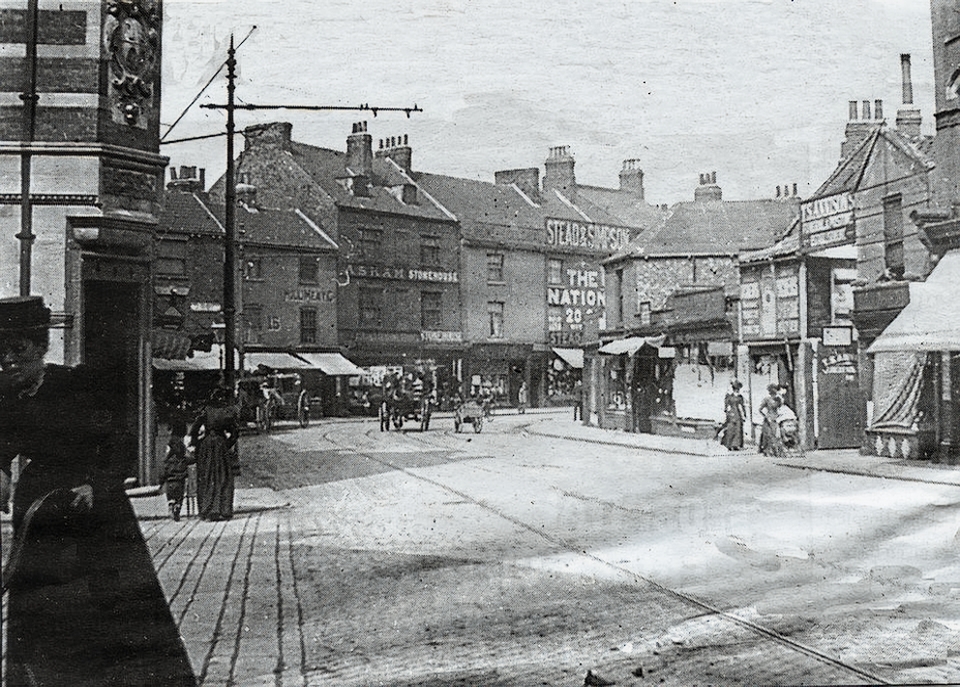

The business was very successful. John & Jane moved their premises to North Bridge Foot. This was situated at the junction of Witham and Gt Union Street.
Jane and John had at least 7 children, Thomas, John, Jane, Robert, William, George (died in infancy), and David.
In 1826, John died suddenly, aged only 49, leaving Jane to bring up the family on her own. Jane took up the challenge, and managed to continue running the coaching business with the assistance of her son John. He also ran The Holderness New Inn on the corner of Witham and Dansom Lane. John also developed a further coach route to Hornsea.
In December 1844, aged 67, Jane successfully applied for entry into the Hull Charterhouse. This was probably with the assistance of her youngest son, David. For many years he was a Poor Relief Officer for South Myton District.
However, in 1858 further tragedy struck when John junior died aged 46. His elder brother, Thomas, who in 1848 was recorded as having the Carpenter’s Arms and livery stables in Gt Union Street, took over the running of the business and The Holderness New Inn. He gave it up though, probably because of construction of the Hull to Hornsea Railway in 1862.
Thomas, moved to the St Stephen’s area of Hull, where he became an inn-keeper and coach proprietor.
Jane’s only daughter, Jane, married Samuel Fisher who ran a druggist store at Wilton Terrace, Holderness Road, next door to the ship’s chandler, and Quaker, John Good. Another son, Robert was a clerk at a commercial druggist. A further son, William, emigrated to Australia.
Ten years after Jane entered the Charterhouse, on 27 June 1854, the Hull to Withernsea railway line opened, cutting the journey time from Hull to Patrington to about ½ hour. This must have greatly affected the business that Jane had developed. However, a coach service ran to Patrington for some time after.
Jane died in The Charterhouse on 23 October 1861 of ‘Decay of Nature’ aged 83, and is buried in HGC with several members of her daughter’s family, the Fisher’s. The headstone was sadly removed in the 1970s.
Julia Hammond was born 31st December 1859 in Wisbech. She was the youngest of 10 children born to labourer, Christopher Hammond and and his wife Martha (Canham).
In the late 1860s the family moved to Hull, and lived at 3 Fanny’s Terrace, Clarendon Street. Her father died in 1871 aged 51, leaving her mother, Martha, to raise the children. Martha married John Hare in 1874, but she died in 1885.
On 28th March 1875, when Julia was still only 15, she married George Turpin at St. Andrews Church, Kirk Ella. She was illiterate at the time, and simply put her mark. She was also under the marrying age and incorrectly stated her age as 18. Both gave their addresses as Wold Carr, which was approximately where Parkfield Drive is now, and would have been in the Kirk Ella Parish.
George was born in 1858 at Oxmardyke, near Gilberdyke. He was the son of Mark Turpin and Hannah (Simms) of Cliffe, near Market Weighton. At the time of their marriage, George’s occupation was given as a labourer. He later became a plate layer on the railways, eventually becoming an engine driver. They had 15 children, only 10 of which survived childhood. In 1881 the family was living at Cliffe, later moving to 13, Filey Terrace, Gillett Street, and then to 11 Gillett Street.
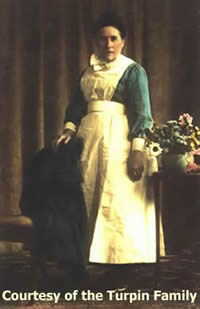
Although having very little formal education, and being unable to read and write, Julia trained to become a midwife. This was at a time when only unmarried mothers and poor women actually gave birth in hospital. Prior to 1900, women in Hull were 6 times more likely to die from an infection in hospital, than at home. At that time, the majority of births in working class areas in Hull, were attended by a ‘local woman’, who would have experience of attending births, but would not be qualified.
Increasingly concerned about the infant mortality rate, the government introduced the Midwives Act in 1902. This meant that all midwives had to be qualified and registered. It took a couple of years to fully implement. Hull opened its first maternity ‘house’ at 569 Holderness Road, near Westminster Avenue, on 1st March 1905. In 1929, the old Sanatorium on Hedon Road, was converted into a Maternity home. However, there was a cost of £1 to enter the hospital, which not everyone could afford. Even as late as the 1920s, many women still employed the services of ‘a local woman’ when giving birth.
Julia was one of only a handful of certified midwives in the Hull area. With her navy blue uniform, and riding her sit up and beg bicycle, complete with basket, she was a familiar figure in the Hessle Road area. She would have been on call 24 hours a day, 7 days a week. She went on to deliver over 2500 babies in the West Hull area.
Her husband, George died of an aneurysm at 17 Eastbourne Street 21st July 1929 aged 71.
Julia’s daughter Olive, and grand-daughter Sylvia, followed in her midwifery footsteps both serving in the Hessle Road area. Olive delivered about 3,600 ‘Hessle Roader’s’ before she retired in 1939, and daughter Sylvia delivered over 2000 babies until her retirement in 1958.
Julia died at 36 King Street, off Charles Street on 2nd May 1937 aged 77.
Both Julia and George are buried in Hull General Cemetery. The headstone no longer remains.

The story of the Hohenrein family of butchers and it’s tribulations during WW1 is well documented. Many of the family are buried in Hull General Cemetery, and are commemorated with an impressive marble monument.
The family originated in Mosbach, Baden- Wũrttemburg, near Heidelburg, Germany, Georg Frederick Hohenrein (1832-1902) emigrated to Hull in 1848, and established pork butchers shops in Waterworks Street and Princes Avenue.
This story relates to one of Georg’s great grand children, Jean Bartel, who, although not buried in Hull General Cemetery, has direct links to it.
Georg and his wife Katherina (Myer) had 6 children, 2 of which died in infancy. During WW1 the family suffered from anti German sentiment, and Charles Henry (1883-1974) changed the family name to Ross.
Charles Henry’s brother, George William (always referred to as William) (1865-1933), married Julie Bierman. From this marriage they had a son, William born 1897, and a daughter, Else, born in Hull 3rd February 1898. Becoming increasingly concerned at the anti German sentiment during WW1, he emigrated to Germany with his family. However, as British subjects, George William. and his teenage son, William were immediately interred in the Ruhleben Internment Camp, near Berlin until the end of the war.
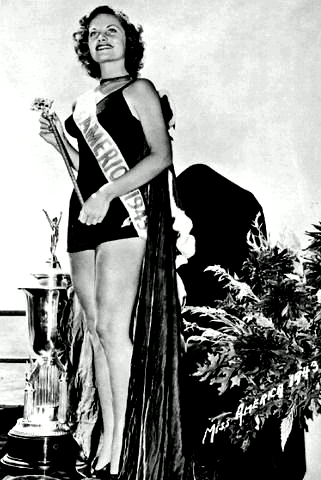
After the war, his daughter Else, married Alfred Leonhardt Bartelmeh, and in 1922, the family moved to America. They had a daughter, Jean who was born in Los Angeles 26th October 1923. Jean shortened her name to Jean Bartel. She later won the Miss America competition in 1943. Jean was the first college student to be crowned Miss America. She worked on Broadway as an actress/singer, and later worked in films and TV. Jean once claimed that “I was never beautiful, but I had vitality and looked healthy”. She married William Hogue but had no children. She died 6th March 2011 aged 87.
Sadly, her brother William, who became a doctor, was killed in an allied bomb attack in Germany in WW2.
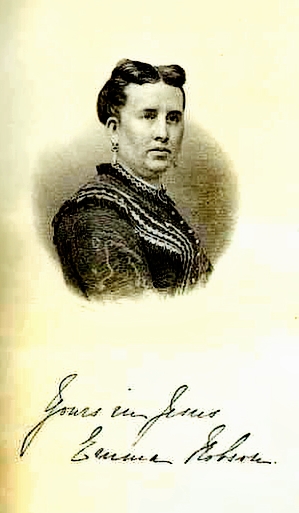
Emma Hodge was the eldest of the 6 children of Henry Hodge and his wife Jane (Simpson). She was born in Louth on 27th November 1837. Her father was working there, prior to his retuning to Hull to establish his own seed-crushing mill.
The family lived on Holderness Road, near Williamson Street. Emma became very involved with the Primitive Methodist movement through her father. He had donated large sums of money for the establishment of chapels in Hull. He was also a friend of William Clowes. Clowes was one of the co-founders of this religion.
She was an active member of the ‘Bright Street Chapel opposite the family home. This chapel was one which her father had laid the foundation stone. He had also donated substantial monies for its construction in 1863.
Emma married Joseph T Robson (1838-1897) at the William Clowes Chapel in Jarratt Street on 26th May 1859. Joseph was a manager at her father’s mill on Holderness Road. He was also an active member of the Primitive Methodist Church.
Emma, (referred to as Mrs JT Robson), and her husband, were well respected, and regularly preached at local chapels. She also became a councillor, a rare event in Victorian England.
They moved to a house in Hornsea Parade on Holderness Road. During their marriage they had 3 children. These were Henry Hodge (1860), Edwin (1863) and William Arthur (1865),
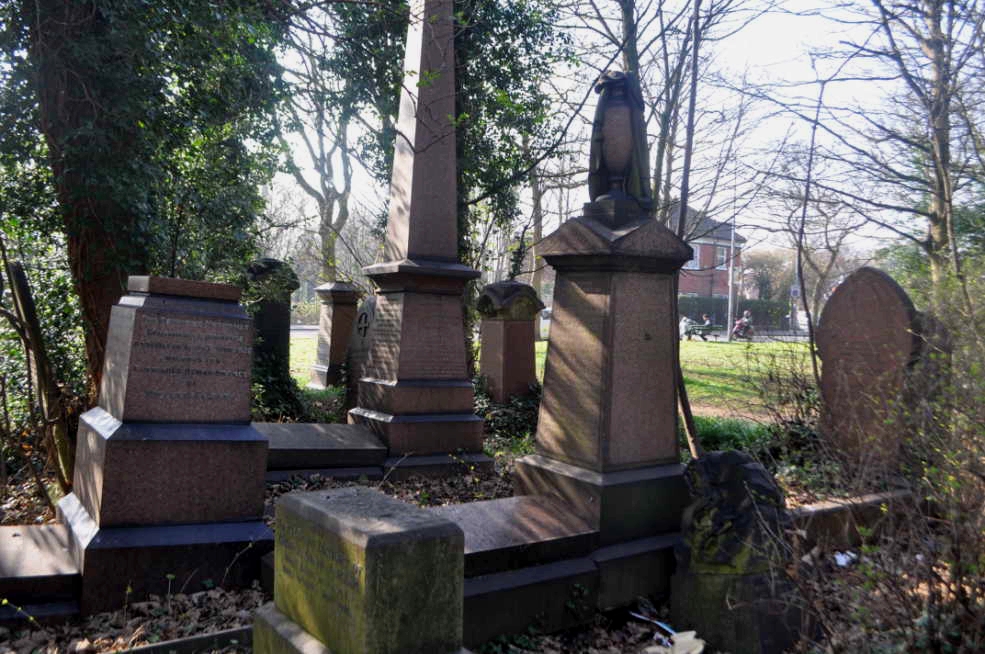
Emma died from Erysipelas, (an acute skin disease), on 30/6/1869 aged just 31. Her father was devastated by her death, and erected a large monument in the ‘Prim Corner’ section of HGC. The Reverend Joseph Wood wrote a rather morose book about her, entitled ‘Sunset at Noonday’. The 1870 ‘Primitive Methodist Magazine’ published Emma’s obituary. In it it is stated that ‘she was as near our ideal of the model wife and mother’.
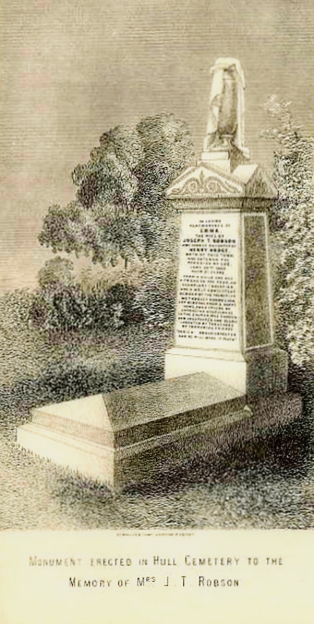
Her husband remarried Ellen Mallinson in 1873, and had 2 further children. He died in 1897 aged 59 and is also buried in the same grave as Emma.
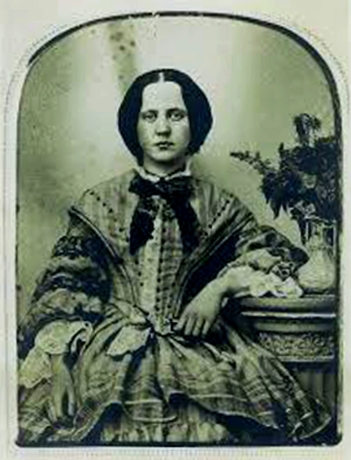
Rebecca was the grand-daughter of William Irving, (the eldest daughter of Jane 1812-1860), and her husband John Richardson Greenwood (1806-1874), the son of a Hull shipping merchant. She was born in Hull on 8 April 1837. She was baptised at the Fish Street Independent Church on 22 June, 1837. The family moved to Dollar in Scotland, and later to Crosby Garrett. This was on the edges of the Lake District. Rebecca spent her teenage years here. Her paternal grandfather, George Greenwood, was a lay Baptist preacher who lived in Haworth. He was also a friend of Patrick Bronte. During the family’s visits to Haworth, Rebecca became friends of the Bronte sisters.
The family emigrated to Australia in 1858, unaccountably, leaving their youngest son (Rebecca’s brother), William Irving Greenwood in Hull with her parents William & Mary Irving. Was it because he was a sickly child? We don’t know. He died of scarlet fever, in 1862 however aged only 11. He is buried in the family grave in Hull General Cemetery.
After the family emigrated to Australia, Rebecca married George Morrison M.A., after her family emigrated to Australia. He was the Principal of the National Grammar School, Geelong, in Melbourne. He was made the Principal on 7th December 1859. They had nine children. Rebecca helped run, and expand the Geelong College with her husband.
Rebecca Morrison played an important, though little advertised role, in the evolution of the Geelong College. Known simply as ‘Mrs Morrison’ to generations of students. She guided the boarding and domestic establishment that underpinned the operations of the School.
One ex-student wrote, “She always took a vivid interest in the boys at the College, and her marvellous memory for names and faces lent a great deal of charm to the visits of old boys, who came back expecting to find themselves forgotten, only to learn that Mrs Morrison remembered them and many little incidents of their school careers”.
After the death of her husband in 1898, Rebecca continued be involved with the college. The Morrisons were to have eight children – five sons and three daughters. Rebecca died at South Yarra on 26 March 1932 aged 94 – three of her sons; Charles Norman, George Ernest, and Arthur Robertson Morrison having predeceased her. Geelong College still exists and continues to flourish.

Sarah Smith was born in Hull in 1758, the daughter of Joseph Smith. She was baptised in Holy Trinity Church on the 31st August 1758. She also had a sister who was 10 years her junior called Mary, (Polly).
Sarah married mariner, William Robinson in Holy Trinity on 13th September 1785. She was obviously educated, as she signed her marriage certificate.
Sarah took on the post of Matron and House keeper of Trinity House on Christmas Day, 1794. In addition to providing lighthouses, charts etc, Trinity House were also trustees to a fund for relief & support of all maimed and disabled seamen, their widows, and children.
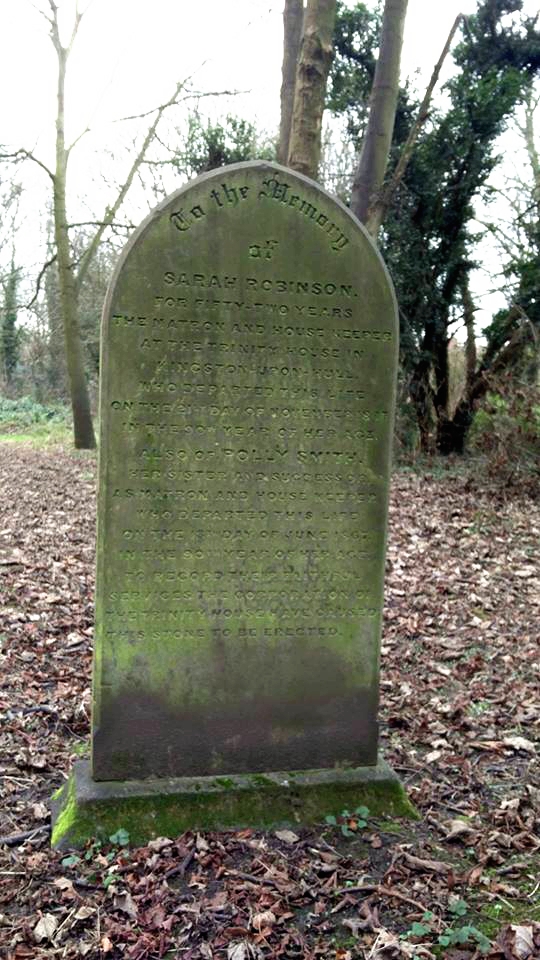
Remarkably, Sarah stayed in the post for 52 years, until her death on 21st November 1847 aged 90. She was succeeded in the post by her unmarried sister, Polly. She remained in the post for a further 10 years, until her own death in 1867, also aged 90.
Trinity House were obviously very impressed with the service of Sarah and her sister, Polly. “To record their faithful services the Corporation of The Trinity House have caused this stone to be erected.” The headstone still remains.
Sarah was buried in the same year that Hull General Cemetery opened. She was the 137th person to be buried there. A remarkable epitaph to two remarkable women.

Bill Longbone has had a long relationship with the Hull General Cemetery. He is an active member of the FOHGC and manages the work of the volunteers on the site. His biographical sketches of some of the people buried in the cemetery are one of the highpoints of the success of the Facebook site.
William Tesseyman was termed as Hull’s oldest businessmen in his obituary in 1919. He died at the age of 91 whilst still working.
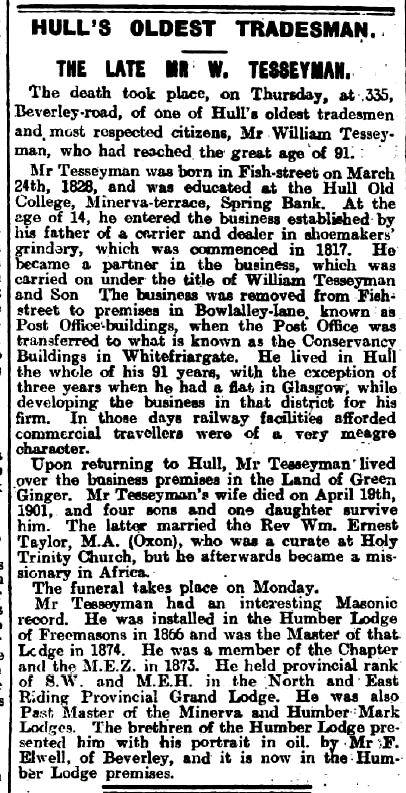
William Tesseyman was born in Fish Street, Hull in 1828. He was the eldest child of George and Mary Ann Tesseyman. He worked as a currier (leather curer) in his father’s business that his father had started in 1817. The family business premises were initially on Bowlalley Lane, but later transferred to The Land of Green Ginger, at its junction with Manor Street.

William married Elizabeth Sarah Hart in 1851. The new family lived at Ocean Place. This was situated at the beginning of Anlaby Rd. They were living there with their 7 children. Sadly, two of them died in childhood, Alice, aged 4 months in 1865, and Elizabeth, aged 6 years, in 1866.

He was an active member of the Hull Masons, and became a Worshipful Master of the Humber Lodge. In the 1870’s, after the death of his father in 1871, the family moved to 335. Beverley Road. A public house called The Bevvy Hotel now occupies the site.
William’s wife died aged 68 in 1901 and he died in 1919. William, his wife Elizabeth and their two daughters are buried in Hull General Cemetery, along with other members of the family.
The business continued under the leadership of his sons.
The family headstone no longer exists. The East Yorkshire Family History Society recorded the inscriptions on the headstone.
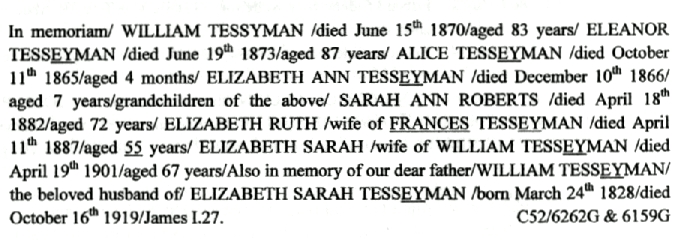

Bill Longbone has had a long relationship with the Hull General Cemetery. He is an active member of the FOHGC and manages the work of the volunteers on the site. His biographical sketches of some of the people buried in the cemetery are one of the highpoints of the success of the Facebook site.
This month’s anniversary is interesting. In May 1876 a discussion took place as to whether a clock tower should be built in the grounds or a clock installed in the lodge. The question rattled back and forth for months. By that September the decision was taken to install the clock into the Lodge belfry.
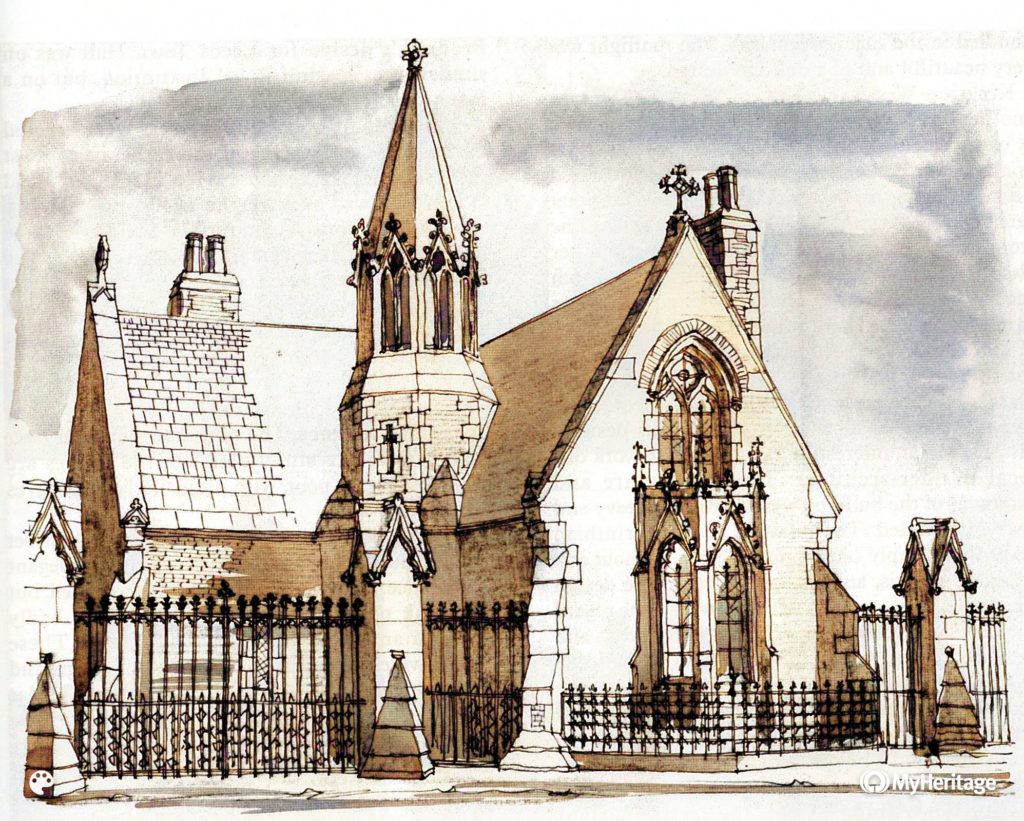
This repair work was to cost £94. 5s which was a considerable sum for a building that was only 30 years old.
In March 1877 the decision was ratified at the AGM and the plan was to install the clock and also conduct some repair work to the Lodge as it,
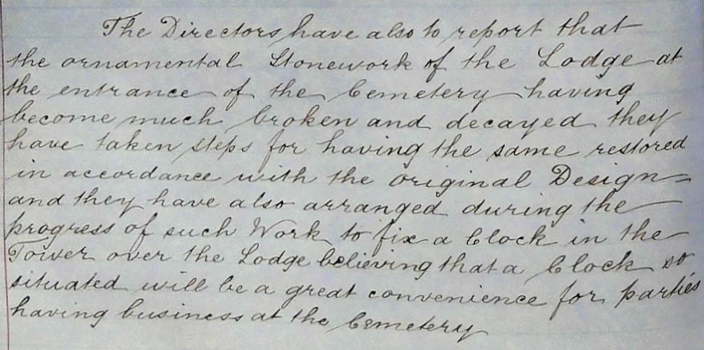
This interaction is interesting in a number of ways. Firstly the decision to repair to the original design shows that the Lodge was something they were proud of. Somewhat different to their feelings in the late 1840s. Then it was obvious from the Company paperwork that the Board were heartily sick of the troubles the Lodge had caused them.
Secondly, it shows the Cemetery Company still wanting to present a good image of itself to the community. The placing of the clock was civic minded. Yes, they may have cloaked this idea with the line, ‘business of the cemetery’ but they knew progress was happening.
By this time, D. P. Garbutt had begun the development of the Avenues. This development, to the Board, was surely just the beginnings of the area the Cemetery occupied becoming more salubrious. Who knows where that may lead?
As such the installation of a clock was a smart move. It was civic-minded enough to appeal, yet it’s cost was small. In essence, a win-win situation for the Company.
The Company received a tender for fixing the clock from a Mr George Pickering of Prospect Street. This tender was accepted and the cost of making and installing the clock was £7.
The final cost of repairing the Lodge and installing the clock was a stupendous £124 10s. At this time the Company were still desirous of making a show and if that meant spending money, then so be it.
Later in its long life it would not be so happy to do so.
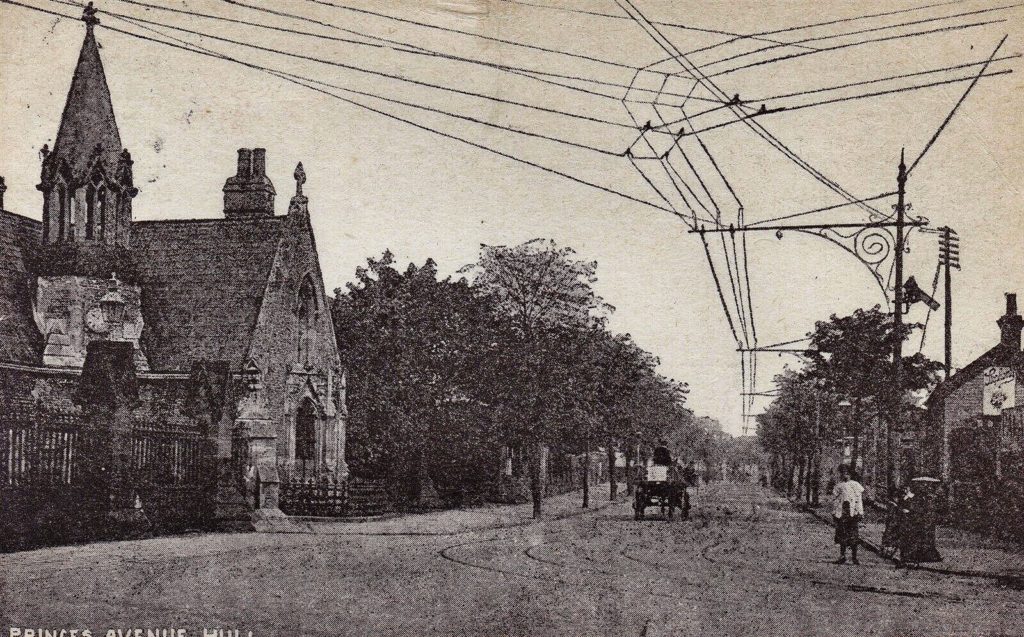

Pete Lowden is a member of the Friends of Hull General Cemetery committee which is committed to reclaiming the cemetery and returning it back to a community resource.
Some of you may remember that, as part of the rehabilitation of Hull General Cemetery, some research and administrative tasks were to be carried out. It was hoped that when these tasks were completed it would help to raise the profile of the site.
One of those tasks was to transcribe the Cemetery burial records onto an Excel spreadsheet. This would then be placed onto this site so that people could search for their relatives or use it for research for other purposes. We were also going to share this database with the Carnegie Heritage Centre, the East Yorkshire Family History Society and also the Hull History Centre.
https://www.carnegiehull.co.uk/
https://www.eyfhs.org.uk/
https://www.hullhistorycentre.org.uk/home.aspx
That is still our aim. You’ll be glad to know that this exercise is reaching the final stages. It’s about 80% complete. We would like to have it completed by the Heritage Open Days in September this year. Perhaps even have a ‘Grand Opening’ of it at a venue yet to be decided upon.
However, to make that date we would like to ask you to join us in finalising this project.
You will need your own computer and access to the internet. The actual work involved is light but it does need patience and attention to detail.
This project will be invaluable to the City of Hull as well as the professional researcher and the person who just wants to find their ancestor’s grave.
Here’s an example of a burial record so you can see what the job entails. Its from July 1860. As you can see the social history is apparent from the first entry. Rebecca Day dying of fever in Hull Borough Asylum. This building, the last remains of it having been demolished within the last two years, was set at the back of the present HRI. Just think how much more you could find out.
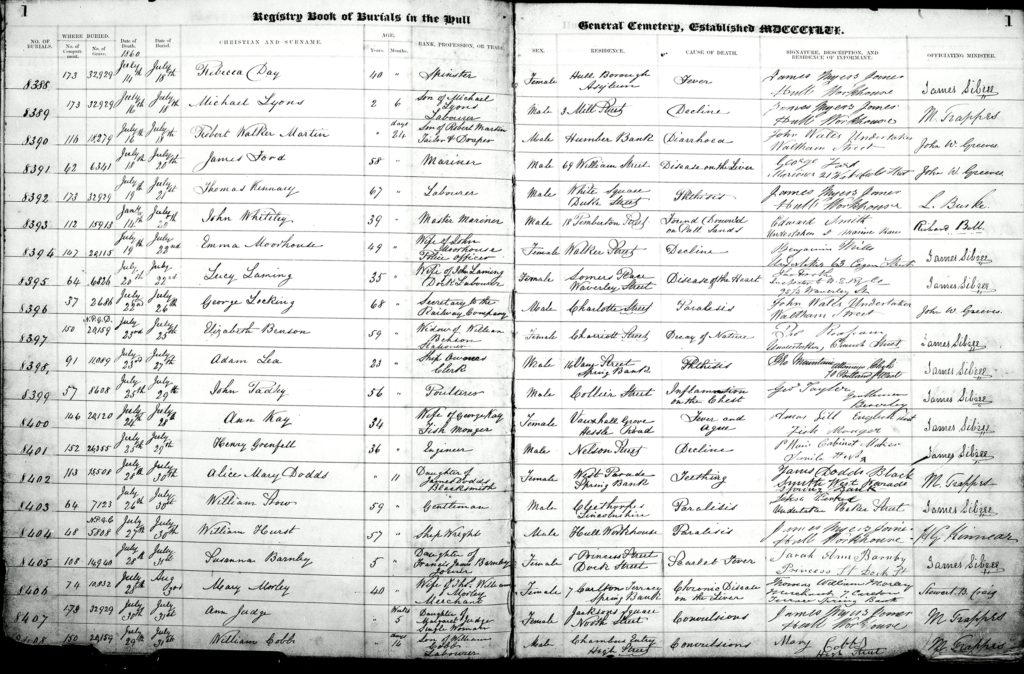
If you want to be part of this project then please contact the FOHGC. We’ll guide you through it and help where its needed.
Sorry, I’ve always wanted to write that and this is the closest I can get to it.
I just thought I’d let you know that I will be giving a talk at the Hull Central Library on Saturday, 19th February. The talk may probably be the last time I’ll be doing The Rise and Fall of Hull General Cemetery.
The talk takes place in the old Local Studies Library, known as the James Reckitt room. It starts at 11.00 a.m. and I think there is a charge of £1.
Hope to see you there.

Pete Lowden is a member of the Friends of Hull General Cemetery committee which is committed to reclaiming the cemetery and returning it back to a community resource.
As part of the Heritage Open Days there were two guided walks arranged.
The first one, on the 11th, was blessed with good weather, and as such attracted a large crowd. So did the second on the 18th. The count for each walk was around 50 to 60 people.
When dealing with such large groups one has to employ a louder voice. You also need to bypass some headstones as it’s just impossible to accommodate all of the people around them safely.
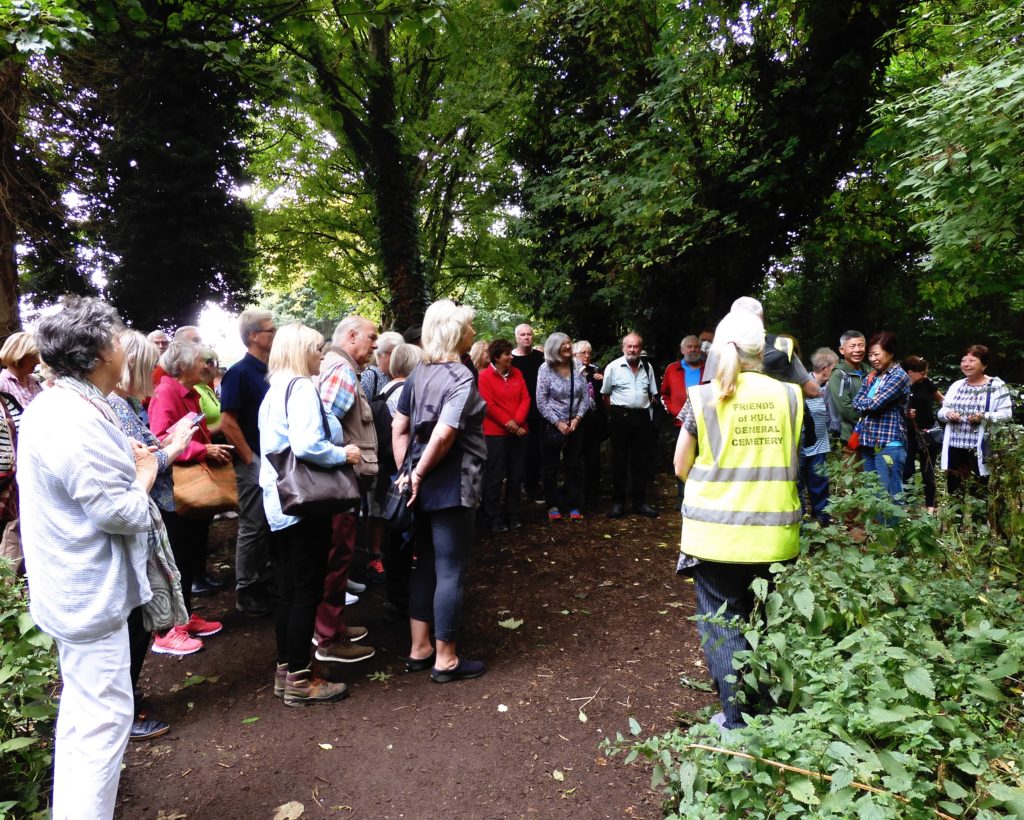
Also, in large groups, people move at a different speed and the slowest speed becomes the group norm. This usually means you cannot do all of the walk. This is what happened on the both walks. We concentrated on the headstones along the north side of the cemetery and terminated the walk at the Workhouse mound.
My reasoning for this was that the newcomers to the Cemetery may have never ventured into the site. They may have been a little intimidated to go out of sight of Spring Bank West. Therefore the back road would have been new territory to them and that’s why I chose it.
I hope everyone who ventured into the wilds of the Cemetery enjoyed it.
One of the results of these truncated walks was that another walk has been arranged to take place. This will be on October 2nd at 11.00 a.m.


The walk will go from Princes Avenue corner along the south side of the Cemetery. Along the way you’ll find the grave of a man who managed to bribe the electors of the 1853 parliamentary election. You’ll see the grave of an artist who lived through the Indian Mutiny. The grave of the man who built the iron Eleanor Crosses that grace the cemetery, the grave of the man who founded the Wilson shipping line and many others.
I’m looking forward to next years’ Heritage Open Days.

Pete Lowden is a member of the Friends of Hull General Cemetery committee which is committed to reclaiming the cemetery and returning it back to a community resource.
William Henry Moss was born in London in 1814 and was articled as a solicitor. He came to Hull in the 1840’s and married Eliza Charlotte Blundell, daughter of Henry Blundell, (founder of Blundell, Spence & Co) and his wife Maria (Porter) in 1840. The marriage resulted in seven children.
The couple are recorded as living in Russell Place, Linnaeus Street in 1841. In the subsequent census’ they are living at 4 Kingston Terrace, Beverley Road, adjacent to the Mariner’s Almshouses (now Kingston Youth Centre). In 1848 he is recorded as being in partnership with Francis Lowe of Moss, Lowe Solicitors, later, Blundell, Moss, Lowe & Co, at 19 Parliament St.
William was the company solicitor to the Hull Docks Company, and was very active in local politics. He promoted the Free Library in Hull, and was twice elected Mayor of Hull, firstly in 1856, and again in 1862.
He remained an Alderman for many years. Whilst Mayor, he paid for the marble statue of Queen Victoria in Pearson Park. The statue had been commissioned in 1861 by Zachariah Charles Pearson to commemorate an earlier Royal Visit. However due to Pearson’s bankruptcy, he was unable to pay for the work. Moss picked up the bill.
His daughter Maria Blundell Moss died aged only two months in 1858. His son, Bernhard Martin, died two years later aged four.
William died of pleurisy in 1874 aged 60, and his wife Charlotte died aged 71 in 1888.
The family are buried in Hull General Cemetery, but their headstone was removed in the 1970’s. The East Yorkshire Family History Society recorded the inscription.
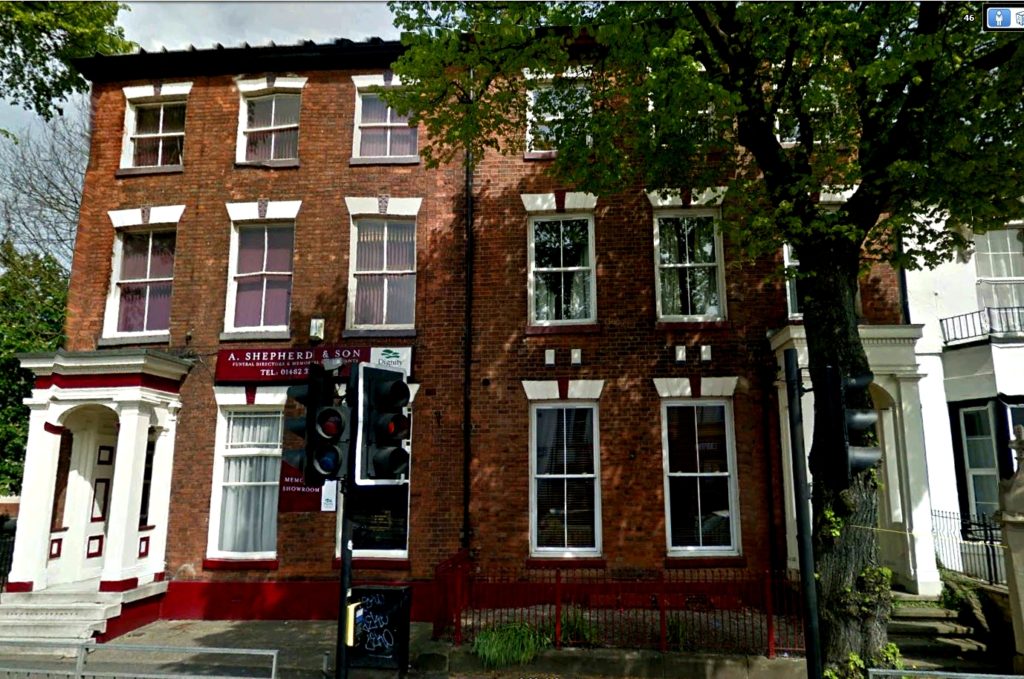

Bill Longbone has had a long relationship with the Hull General Cemetery. He is an active member of the FOHGC and manages the work of the volunteers on the site. His biographical sketches of some of the people buried in the cemetery are one of the highpoints of the success of the Facebook site.
Next month is Heritage Open Day month. The second week of September is your opportunity to see behind the scenes of some places in Hull and the East Riding that are not often fully open to the public. So grab the chance to do a bit of ‘hands-on history’ while you can.
In between times you may want to have read of one or two articles on here.
Firstly there will be more from Bill Longbone’s excellent pieces from the Facebook Archive. Secondly, Helen Bovill will be providing more of her stunning wildlife photographs.
The longer article will be the first part of the story of a remarkable family who are buried in Hull General Cemetery. ‘The Stathers of Spring Bank’ highlights the story of a two brothers who were the model of Victorian inventiveness. I hope you enjoy it.
Of course, there will be an Anniversary item. This will focus on October 1946 and, strangely, how that anniversary involved me to some extent.
And all the news that can safely be reported will be here. Next Month
See you all next month.

Pete Lowden is a member of the Friends of Hull General Cemetery committee which is committed to reclaiming the cemetery and returning it back to a community resource.